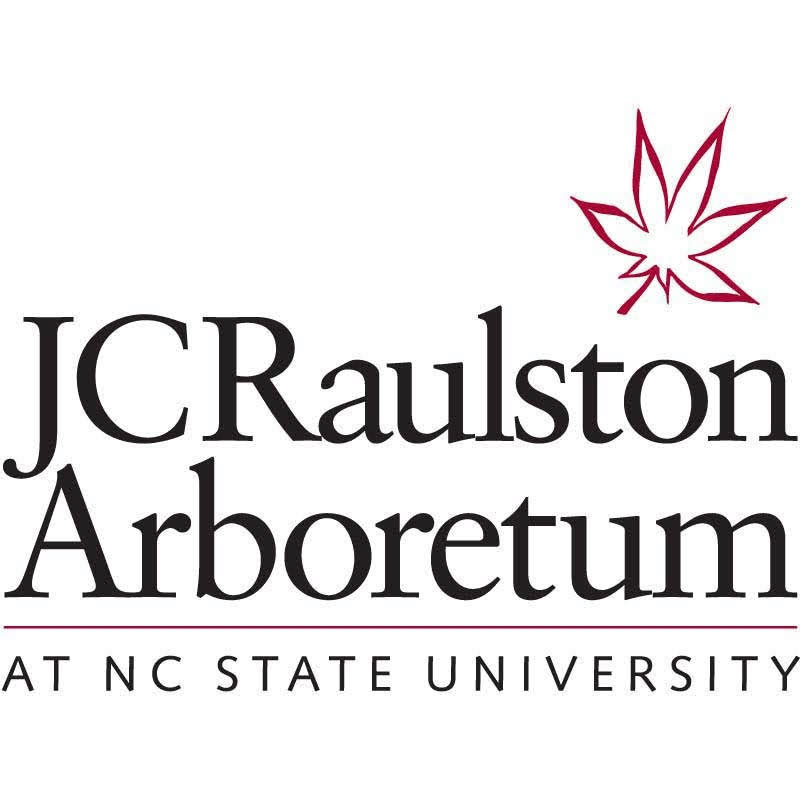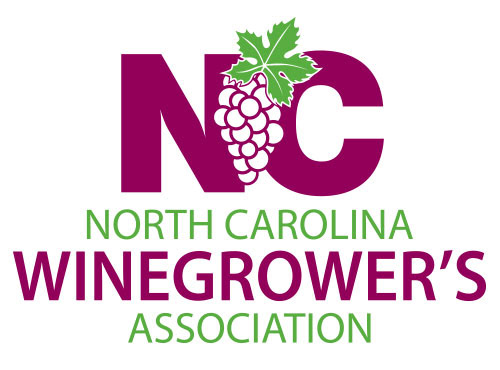Permission granted for redistribution – photo credit requested (Courtesy of JC Raulston Arboretum)

Moonlight in the Garden
A magical lighting exhibition
Site contents:
–Press releases for the 2022 and 2019 Moonlight in the Garden exhibitions (2020 and 2021 were cancelled due to COVID19)
–Photos (Courtesy of JC Raulston Arboretum at NCSU)
–Interview with Mark Weathington, Director, JC Raulston Arboretum
–Interview with John Garner, Volunteer Chair of Moonlight in the Garden and President of Southern Lights of Raleigh
–List of Moonlight in the Garden suppliers
–Logos
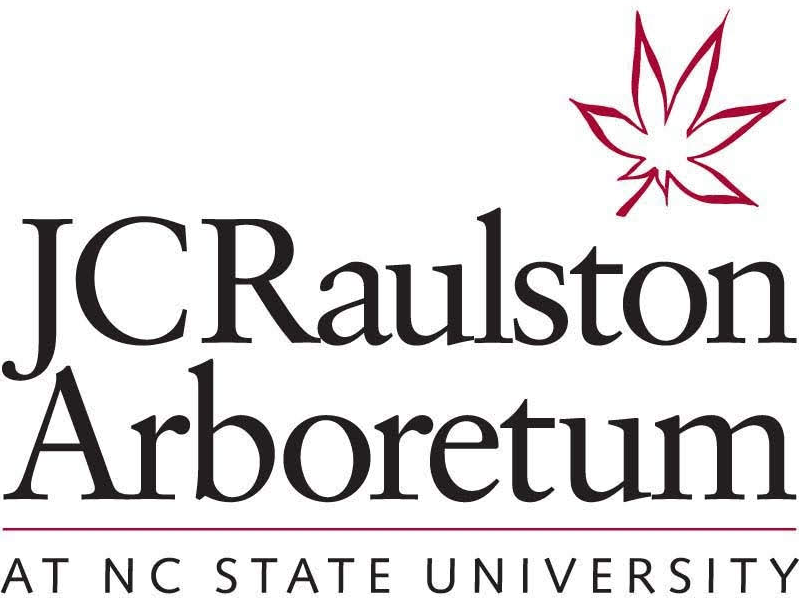
Magical lighting exhibition illuminates NC State University Arboretum
October 23, 2022
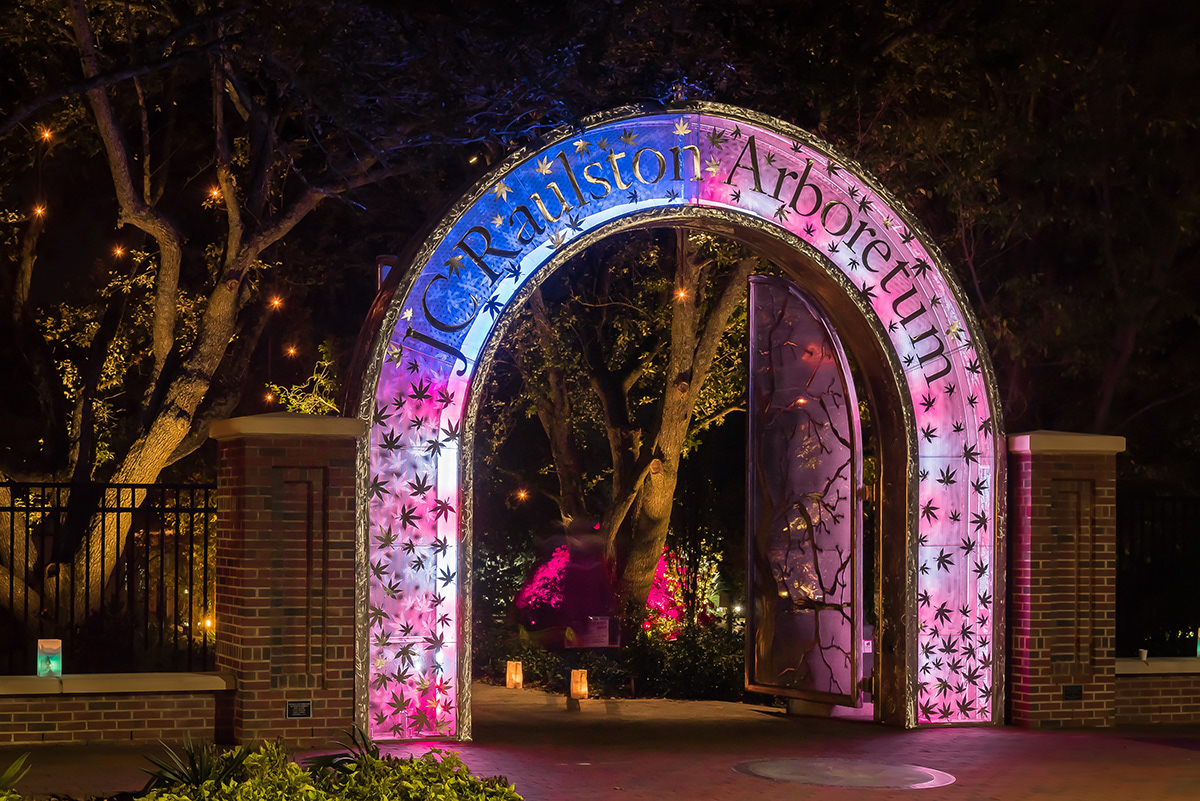
RALEIGH, NORTH CAROLINA – For seven nights in November, the magical lighting exhibition Moonlight in the Garden will illuminate and showcase JC Raulston Arboretum at North Carolina State University.
Sold out every evening in 2018 and 2019 and on hiatus for the past two years, Moonlight in the Garden provides the only opportunity to access and experience the JC Raulston Arboretum after dark.
“Moonlight in the Garden is a chance for us to light up the garden and share what a magical place the Arboretum can be at night,” said Mark Weathington, director of the JC Raulston Arboretum. “The lighting displays and the artistic uses of light show how different a garden looks and what can be done to make it an enchanting space into the night.”
Exhibition dates include a special Preview Night, with finger food and beverages, on Tuesday, November 8, 6:30-9:00 PM; plus, presentations on Thursday, Friday, and Saturday nights, November 10-12 and 17-19, with timed entries between 5:30 and 9:30 PM. A limited number of tickets are available; click here to order.
“Together with the colorful and festive lighting exhibition, Moonlight in the Garden is a time to bundle up, welcome the fall season, dine at the best food trucks, enjoy the live music, have some hot cider, and roast marshmallows over the fire pits,” said Weathington.
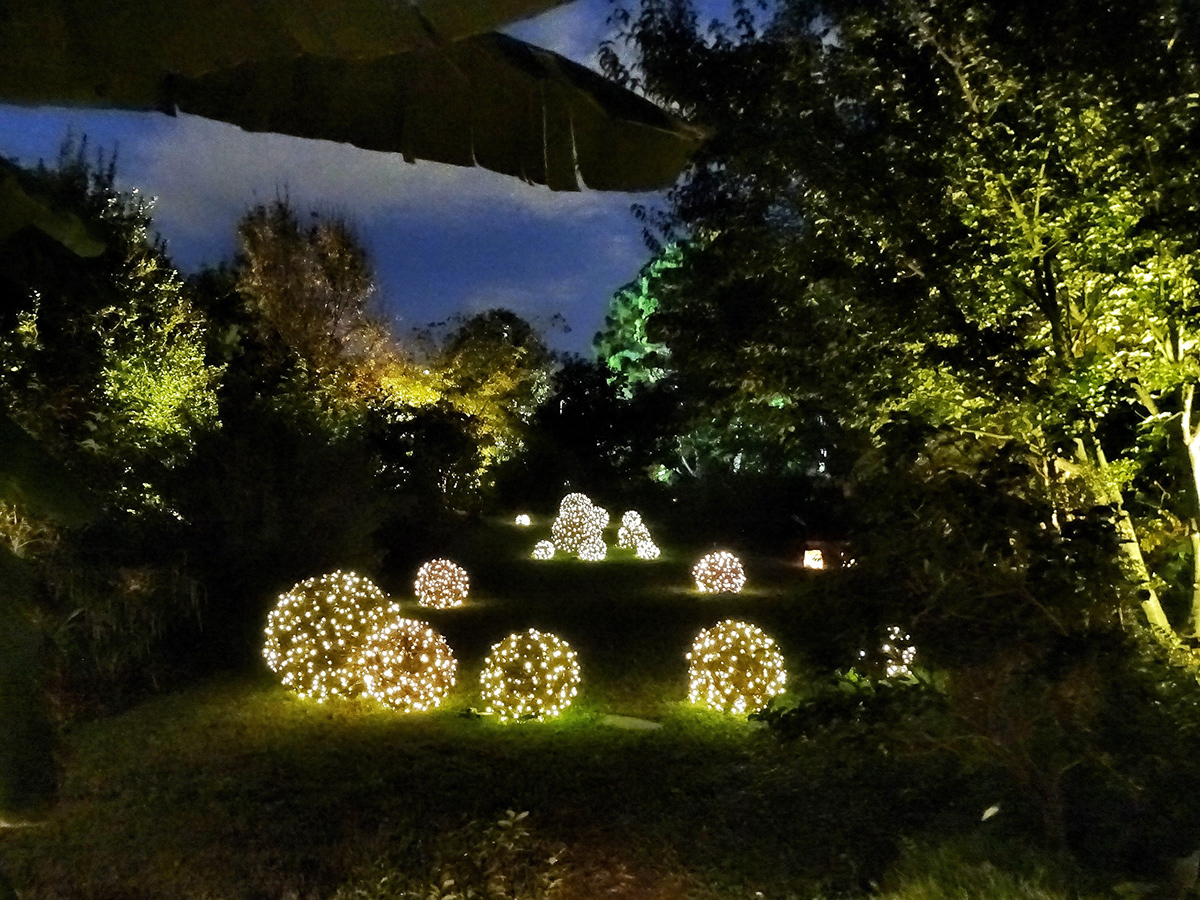
Moonlight in the Garden is a favorite for families looking for a multi-generational family-friendly event that brings together people of all ages to enjoy an evening in the garden. New this year will be the lighting of several dramatic stone sculptures by local artist Phil Hathcock and a series of Chinese lanterns in Asian Valley.
“Children love being in the garden, respond well to beauty, and appreciate and enjoy something that looks and feels magical. Anything you do that gets children out and looking at plants, gardens, and natural areas is an important thing,” noted Weathington. “It’s a powerful way to instill an appreciation for the environment around them. Of course, they also love roasting marshmallows, hot apple cider, and creating blacklight art.”
Advance tickets are $20 for members of the Arboretum, $30 for nonmembers, and $5 for children under 12. A limited number of “Anytime” tickets are available to JCRA members only, which can be used on the day and time of the member’s choosing (excluding Preview Night) for $30. All ticket sales are limited – online reservations are recommended.
Moonlight in the Garden is sponsored by the North Carolina Agricultural Foundation and custom designed and installed by Southern Lights of Raleigh.
“Nature brings joy to life, and illumination at night reveals new dimensions of nature,” said John Garner, Project Chair and President of Southern Lights of Raleigh. “Moonlight in the Garden is a huge lighting exhibition, using miles of cable powered by dozens of transformers to showcase the Arboretum with the latest and best technologies.”
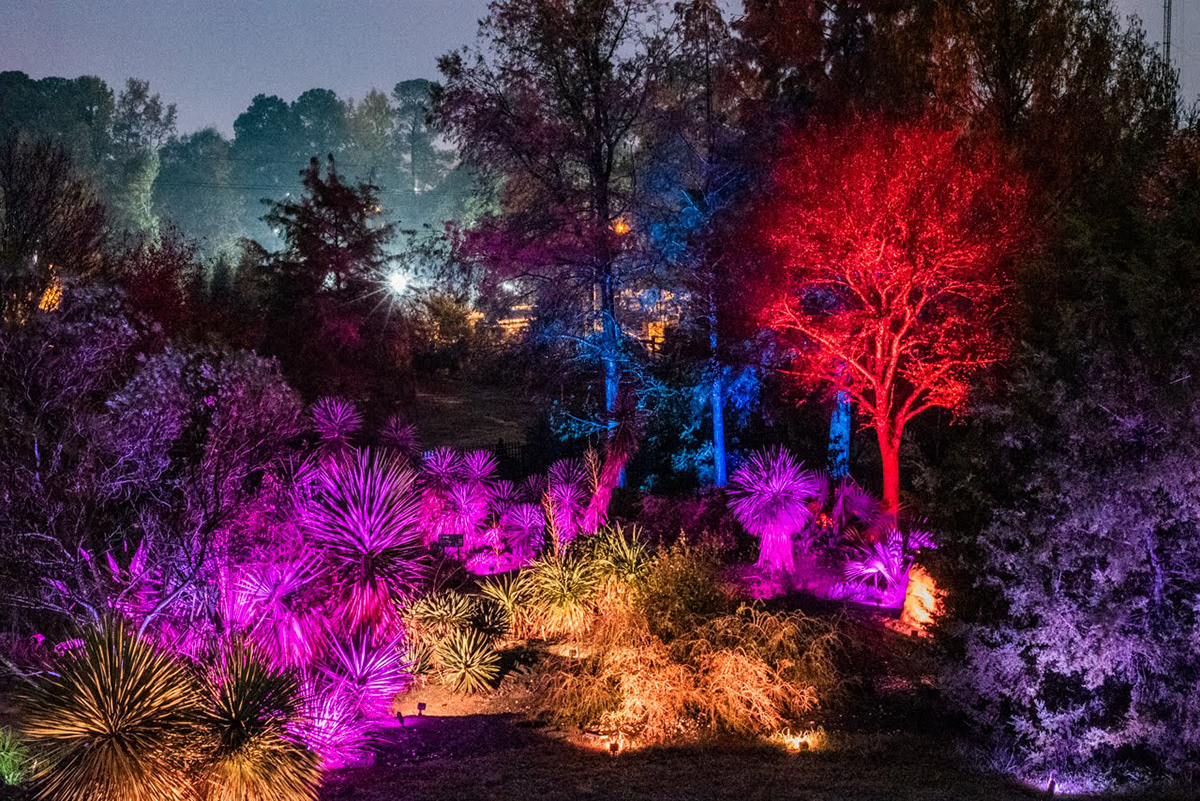
“We have one night exclusively for professional members of the community on Wednesday, November 9,” added Garner. “This will be open to landscape architects and designers, interior designers, engineers, and lighting design professionals. Continuing education credits will be provided by the NC Board of Landscape Architects to participating landscape architects.”
The JC Raulston Arboretum is one of North America’s most diverse botanical gardens, featuring a constantly changing collection of over 8,000 different types of plants. Ranked in the top 95 percentile in plant diversity based on benchmarking by the American Public Gardens Association, the Arboretum’s mission includes plant collection, research, distribution, and education.
Proceeds from Moonlight in the Garden will benefit the daily operations of JC Raulston Arboretum. Moonlight in the Garden is sponsored by, and fund-raising efforts operate under the auspices of the NC Agricultural Foundation, Inc., a 501(c)3 nonprofit (tax ID 56-6049304).
JC Raulston Arboretum is on Beryl Road in Raleigh between Meredith College and the NC State Fairgrounds.
Click here to order Moonlight in the Garden tickets
Click here for media photographs and logos
Click here to read expanded interviews with Mark Weathington and John Garner
Click here for Moonlight in the Garden details
Click here for Preview Night details
Click here for media photographs and logos
Click here to read expanded interviews with Mark Weathington and John Garner
Click here for Moonlight in the Garden details
Click here for Preview Night details
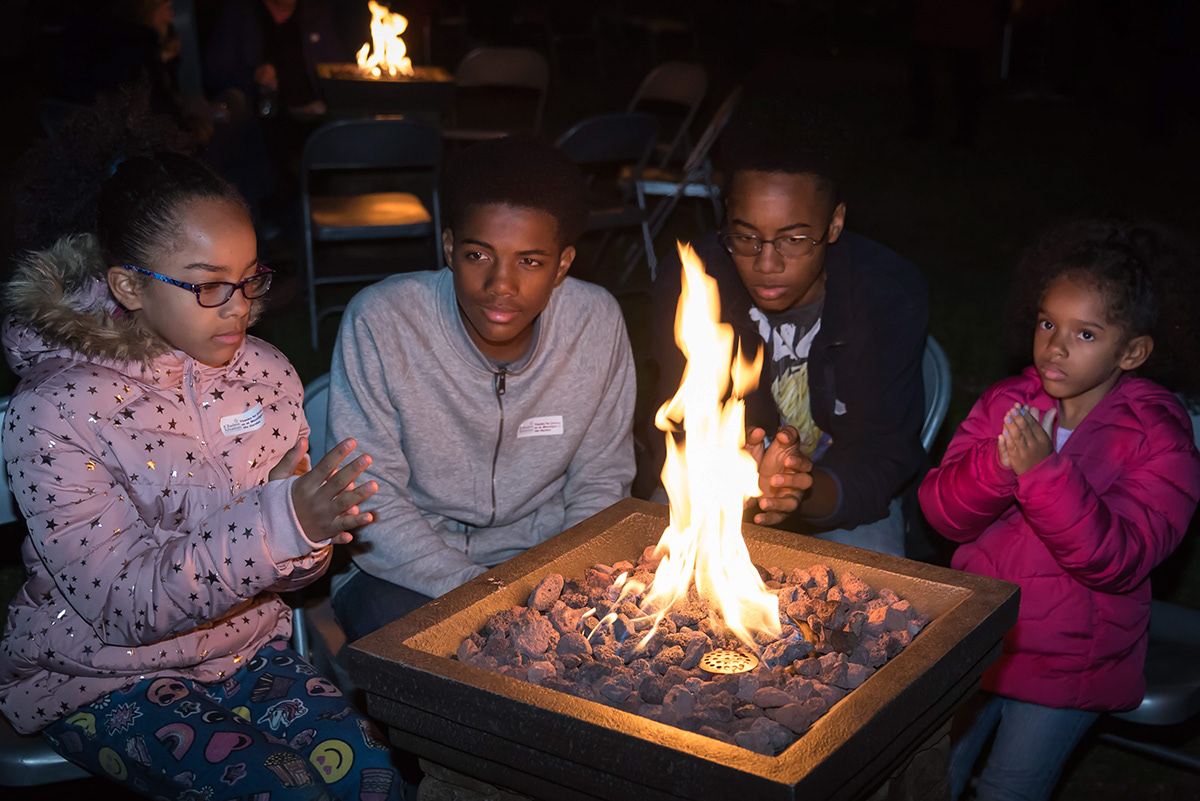
Contact:
Mark Weathington, Director
JC Raulston Arboretum
919-513-7006
Arlene Calhoun, Associate Director
JC Raulston Arboretum
919-513-6789
John Garner, Volunteer Chair
Moonlight in the Garden
Southern Lights of Raleigh
919-755-0380
Robert B. Butler
North Carolina Press Release
Permission granted for redistribution – photo credits required
#LightingExhibition #JCRaulstonArboretum #MoonlightInTheGarden #NCSU #Raleigh #NorthCarolina #Plants #Garden #Arboretum #NightLighting #SouthernLightsofRaleigh #MarkWeathington #JohnGarner #NCAgriculturalFoundation #MeredithCollege #NCStateFair #LEDLighting #Magical #BotanicalGarden #JCRA #Moonlight #GardenArt #PublicGarden
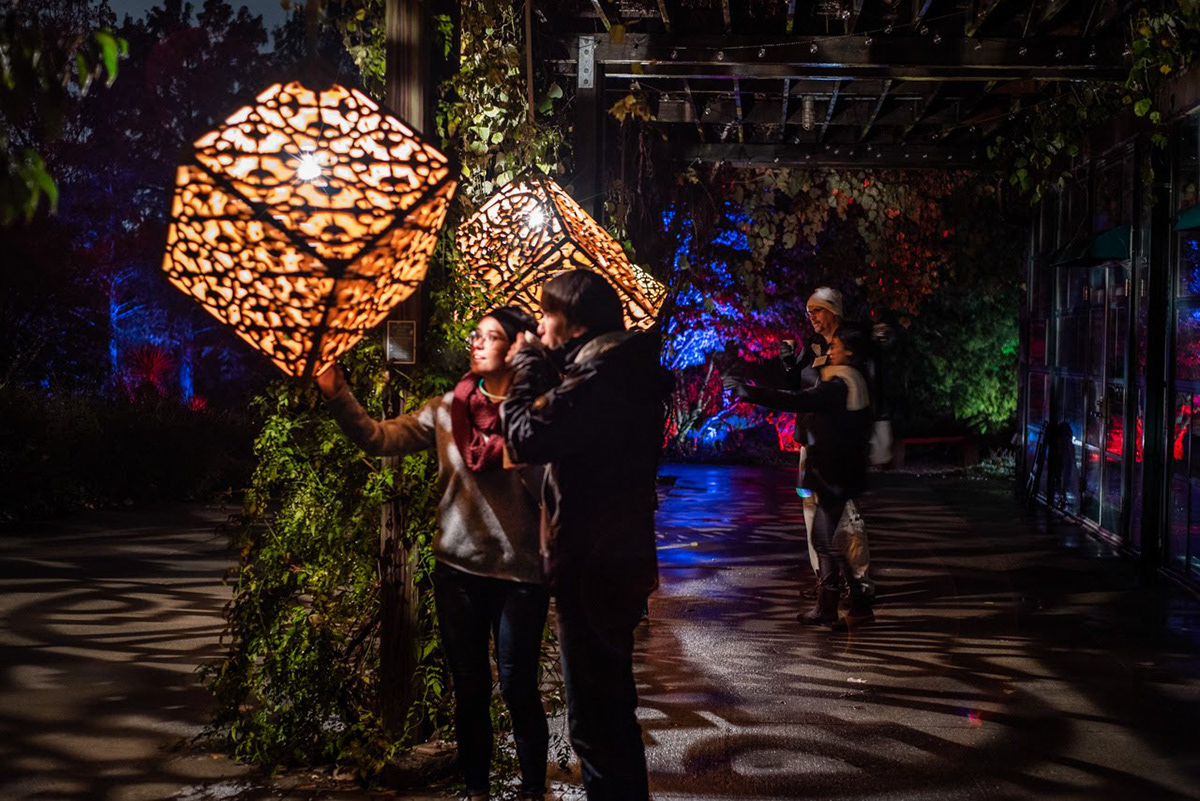
Official Press Release
Magical Exhibition Illuminates NCSU Arboretum for 7-nights in November
Moonlight in the Garden – November 5-16
RALEIGH, NORTH CAROLINA – For seven nights in November, the magical lighting exhibition Moonlight in the Garden returns to illuminate and showcase JC Raulston Arboretum at North Carolina State University.
Sold out every evening in 2018, Moonlight in the Garden provides the only opportunity each year to access and experience JC Raulston Arboretum after dark.
“Moonlight in the Garden is a chance for us to light up the garden and share what a magical place the Arboretum can be at night,” said Mark Weathington, Director of JC Raulston Arboretum. “The lighting displays and the artistic uses of light show how different a garden looks and what can be done to make it an enchanting space into the night.”
Exhibition dates include a special Preview Night, including edibles and beverages, on Tuesday, Nov. 5, from 7 to 9 PM; plus, presentations on Thursday, Friday, and Saturday nights, Nov. 7-9 and 14-16, with two showings each evening, 5:30-7:30 PM and 7:30-9:30 PM. Click here to order tickets.
“Together with the colorful and festive lighting exhibition, Moonlight in the Garden is a time to bundle up, welcome the fall season, dine at the best food trucks, enjoy the live music, have some hot cider, and roast marshmallows over the fire pits,” said Weathington.
New to the Moonlight exhibition this year is the Arboretum’s new Air Bee & Bee, a five-star urban habitat for pollinators completed in August.
“Children love being in the garden, respond well to beauty, and appreciate and enjoy something that looks and feels magical. Anything you do that gets children out and looking at plants, gardens, and natural areas is an important thing,” noted Weathington. “It’s a powerful way to instill an appreciation for the environment around them.”
Advance tickets are $10 for college students and members of the Arboretum, $20 for non-members, and $5 for children under 12. Availability is limited and tickets will sell out in advance.
Moonlight in the Garden is sponsored by the North Carolina Agricultural Foundation and custom designed and installed by Southern Lights of Raleigh.
“Nature brings joy to life and illumination at night reveals new dimensions of nature,” said John Garner, Project Chair and President of Southern Lights of Raleigh. “Moonlight in the Garden is a huge lighting exhibition, using miles of cable powered by dozens of transformers to showcase the Arboretum with the latest and best lighting technologies.”
“We have one night exclusively for professional members of the community on Wednesday, November 6. This will be open to landscape architects and designers, interior designers, engineers, and lighting design professionals,” added Garner. “We expect that continuing education credits will be provided by the NC Board of Landscape Architects to participating landscape architects.” Register for Professional Night here.
JC Raulston Arboretum is one of the most diverse botanical gardens in North America, featuring a constantly changing collection of over 7,000 different types of plants. Ranked in the top 95-percentile in plant diversity based on benchmarking by the American Public Gardens Association, the Arboretum’s mission includes plant collection, research, distribution, and education.
Proceeds from Moonlight in the Garden will benefit daily operations of JC Raulston Arboretum. Moonlight in the Garden is sponsored by and fund-raising efforts operate under the auspices of the NC Agricultural Foundation, Inc., a 501(c)3 nonprofit (tax ID 56-6049304).
JC Raulston Arboretum is on Beryl Road in Raleigh between Meredith College and the NC State Fairgrounds.
Contact:
Mark Weathington, Director
JC Raulston Arboretum
919-513-7006
Arlene Calhoun, Assistant Director
JC Raulston Arboretum
919-513-6789
John Garner, Volunteer Chair
Moonlight in the Garden
Southern Lights of Raleigh
919-755-0380
Robert B. Butler
North Carolina Press Release
Permission granted for redistribution – photo credits required
#LightingExhibition #JCRaulstonArboretum #MoonlightInTheGarden #NCSU #Raleigh #NorthCarolina #Plants #Garden #Arboretum #NightLighting #SouthernLightsofRaleigh #MarkWeathington #JohnGarner #MeredithCollege #NCStateFair #NCAgriculturalFoundation #LEDLighting #Magical #BotanicalGarden #JCRA #Moonlight #GardenArt #PublicGarden
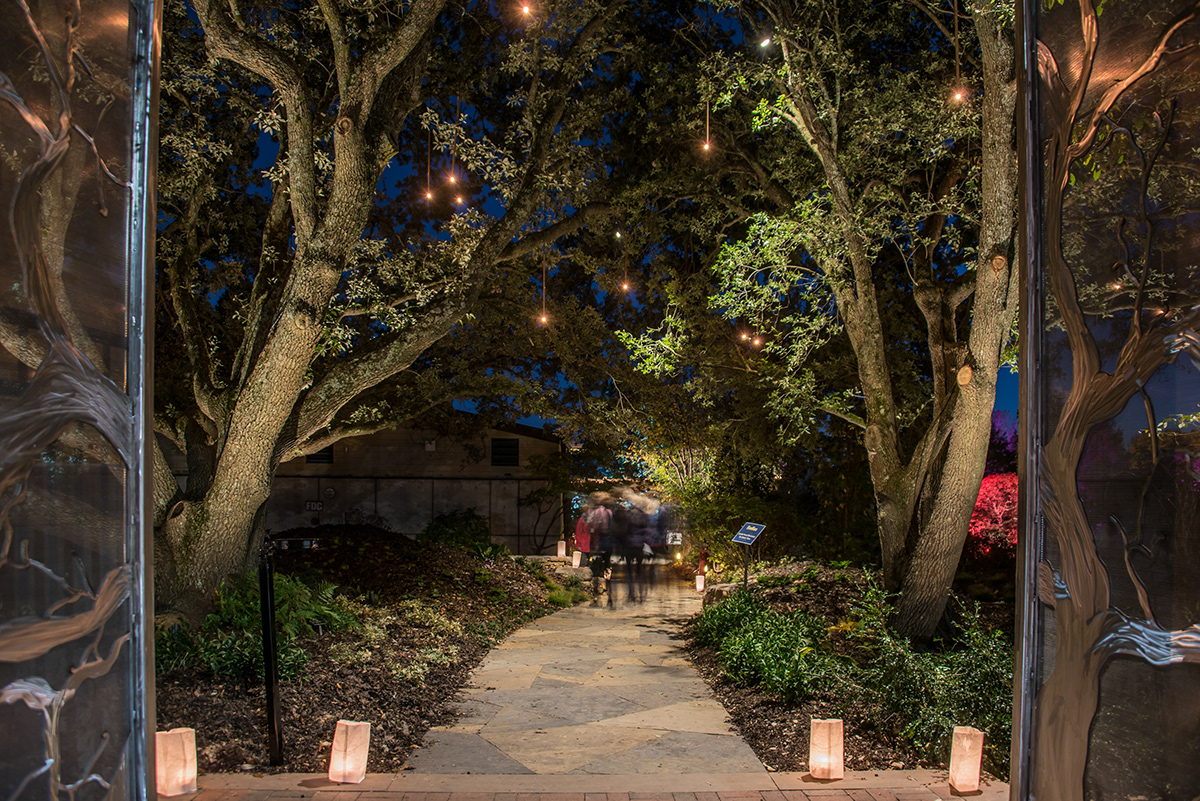
NCSU Arboretum to ‘reveal’ Air Bee & Bee at Moonlight in the Garden
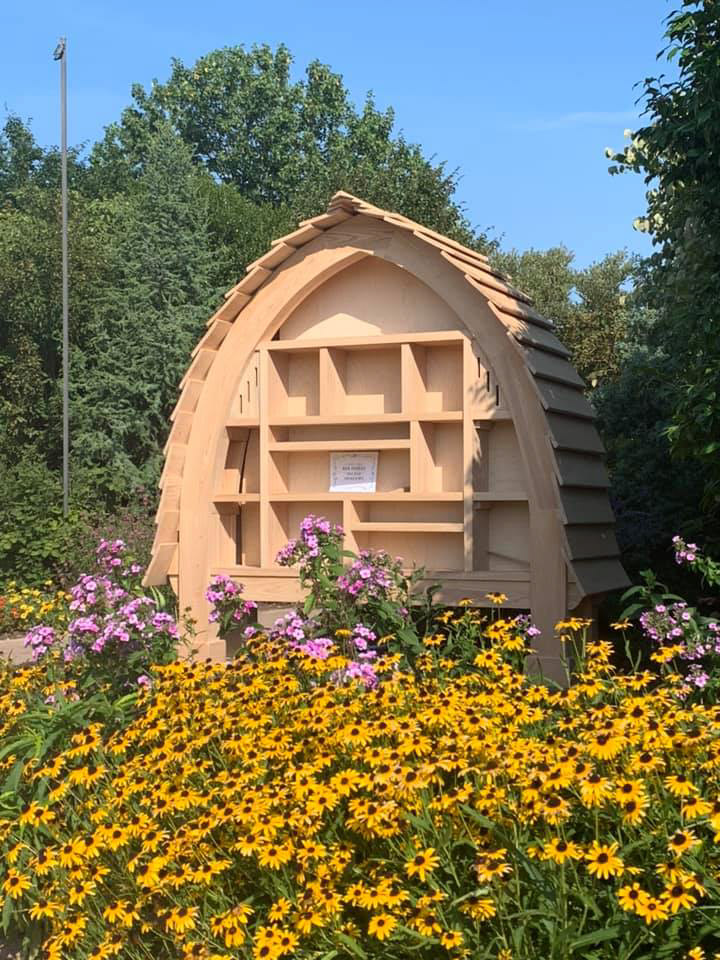
RALEIGH, NORTH CAROLINA – For seven nights in November, the magical lighting exhibition Moonlight in the Garden returns to JC Raulston Arboretum at NC State University. New to this year’s exhibition is the illumination and reveal of Air Bee & Bee, a five-star urban habitat for pollinators completed in August.
“Air Bee & Bee, designed and built by volunteers, is on the perennial border,” said Mark Weathington, arboretum Director. “It is designed to house a variety of solitary bees and wasps, which do most of the pollinating in the wild, as opposed to honeybees which get all the press.”
“Air Bee & Bee has different sized holes to house a wide range of wild bees,” said Weathington. “It will serve as a discussion piece about the vital role of pollinators to help create and maintain a healthy environment.”
Sold out every evening in 2018, Moonlight in the Garden provides the only opportunity each year to access and experience JC Raulston Arboretum after dark.
Exhibition dates include a special Preview Night on Tues., Nov. 5, 7-9 PM; plus, two showings each night on Thurs., Fri., and Sat., Nov. 7-9 and Nov. 14-16, 5:30-7:30 PM and 7:30-9:30 PM. Click here to order tickets.
“Children love being in the garden, respond well to beauty, and appreciate and enjoy something that looks and feels magical. Anything you do that gets children out and looking at plants, gardens, and natural areas is an important thing,” noted Weathington. “It’s a powerful way to instill an appreciation for the environment around them.”
Advance tickets are $10 for college students and members of the Arboretum, $20 for non-members, and $5 for children under 12. Availability is limited, and tickets will sell out in advance.
Sponsored by the North Carolina Agricultural Foundation, Moonlight in the Garden is custom designed and installed by Southern Lights of Raleigh.
“We have one night exclusively for professional members of the community on Wednesday, November 6,” said John Garner, Project Chairman and President of Southern Lights of Raleigh. “This will be open to landscape architects and designers, interior designers, engineers, and lighting design professionals. The NC Board of Landscape Architects will provide continuing education credits to participating landscape architects.” Register here for Professional Night.
JC Raulston Arboretum is one of the most diverse botanical gardens in North America, featuring a constantly changing collection of over 7,000 different types of plants. Ranked in the top 95-percentile in plant diversity based on benchmarking by the American Public Gardens Association, the Arboretum’s mission includes plant collection, research, distribution, and education.
Proceeds from Moonlight in the Garden will benefit the daily operations of JC Raulston Arboretum. Moonlight in the Garden is sponsored by and fund-raising efforts operate under the auspices of the NC Agricultural Foundation, Inc., a 501(c)3 nonprofit (tax ID 56-6049304).
JC Raulston Arboretum is on Beryl Road in Raleigh between Meredith College and the NC State Fairgrounds.
Contact:
Mark Weathington, Director
JC Raulston Arboretum at NC State University
919-513-7006
Arlene Calhoun, Assistant Director
JC Raulston Arboretum at NC State University
919-513-6789
John Garner, Volunteer Chair
Moonlight in the Garden
Southern Lights of Raleigh
919-755-0380
Robert B. Butler
North Carolina Press Release
Permission granted for redistribution – photo credits required
#LightingExhibition #JCRaulstonArboretum #MoonlightInTheGarden #NCSU #Raleigh #NorthCarolina #Plants #Garden #Arboretum #NightLighting #SouthernLightsofRaleigh #MarkWeathington #JohnGarner #NCAgriculturalFoundation #MeredithCollege #Beekeepers #Bees #Wasps #LEDLighting #Magical #BotanicalGarden #JCRA #Moonlight #GardenArt #PublicGarden
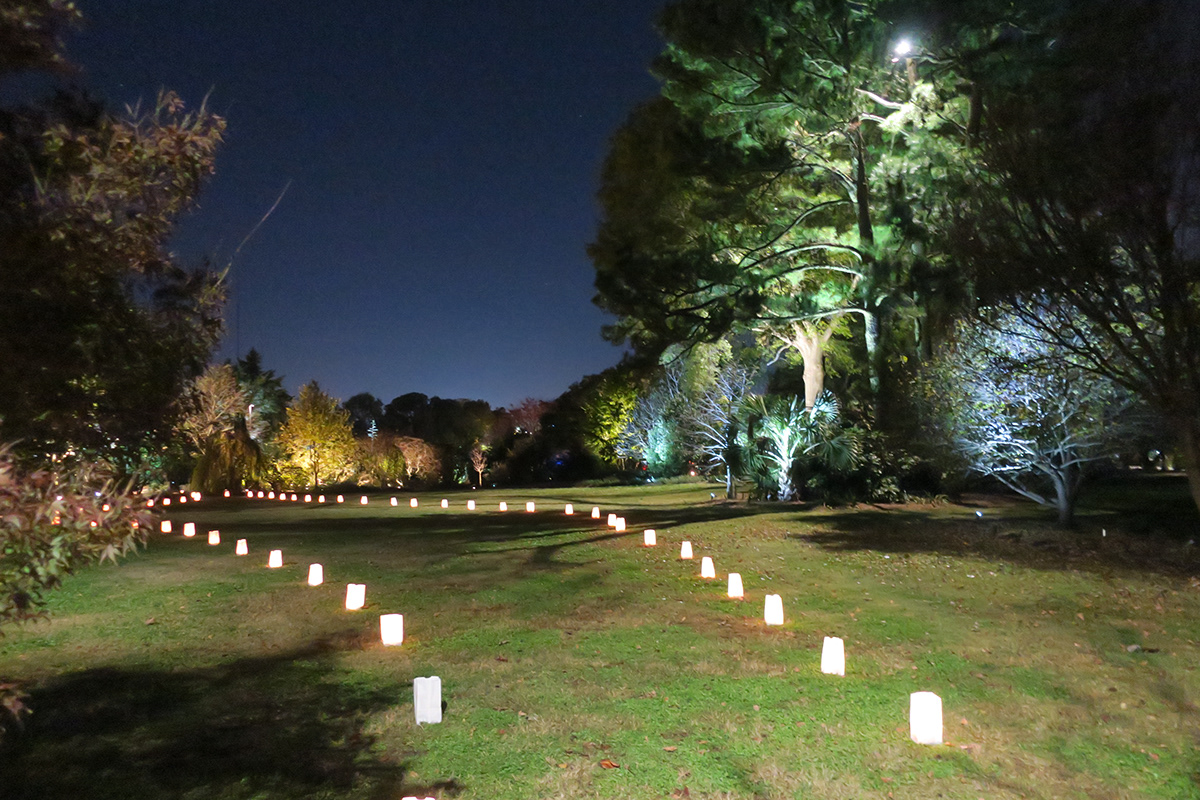
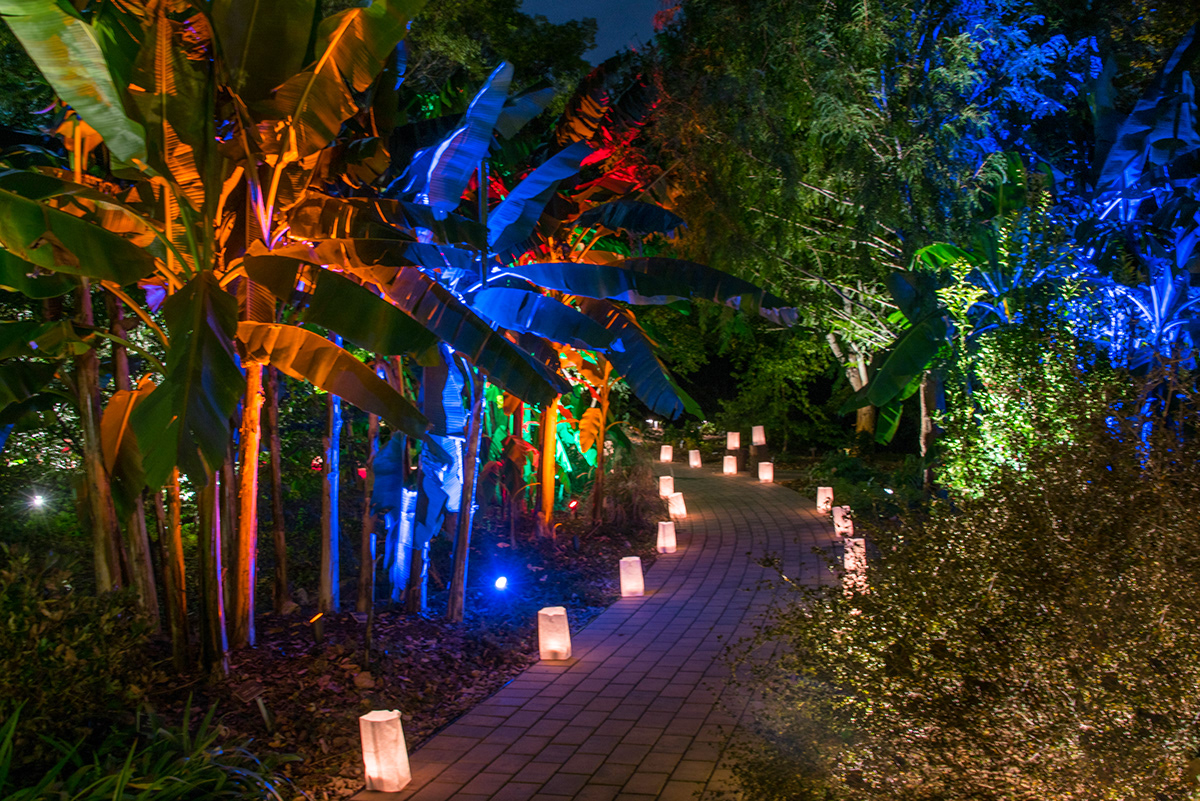

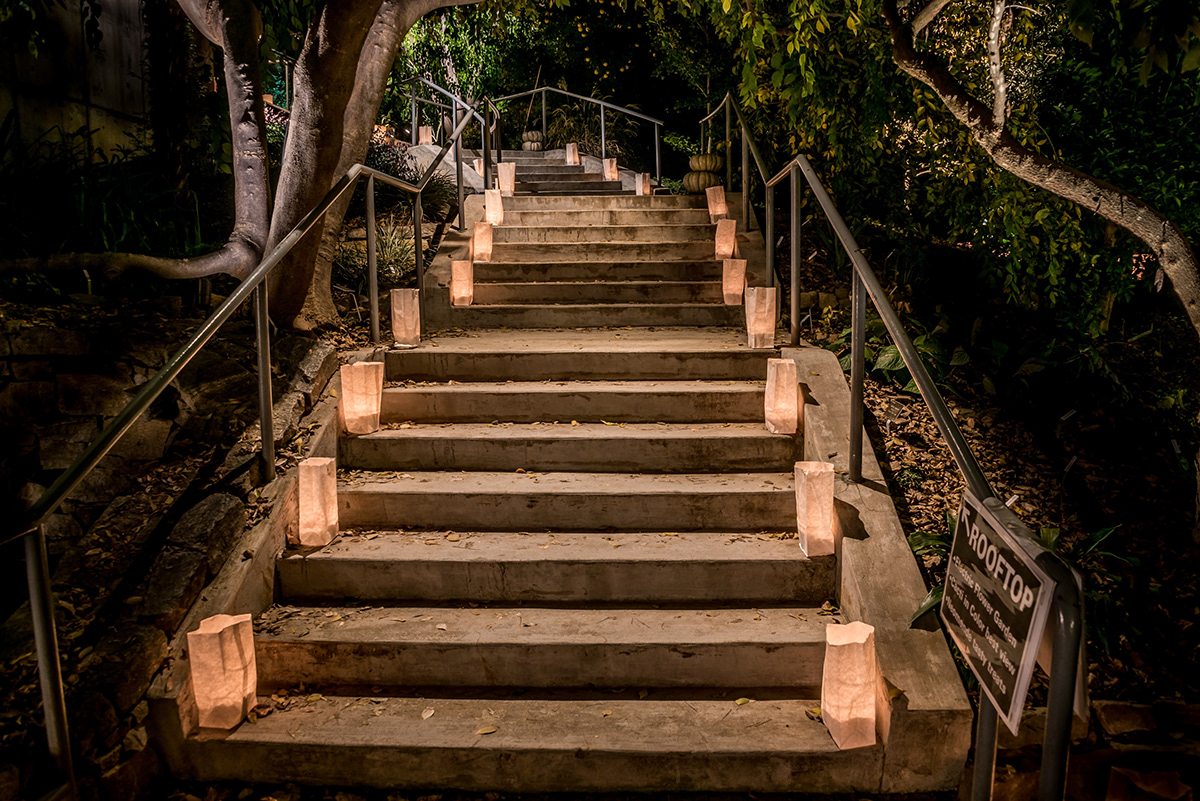
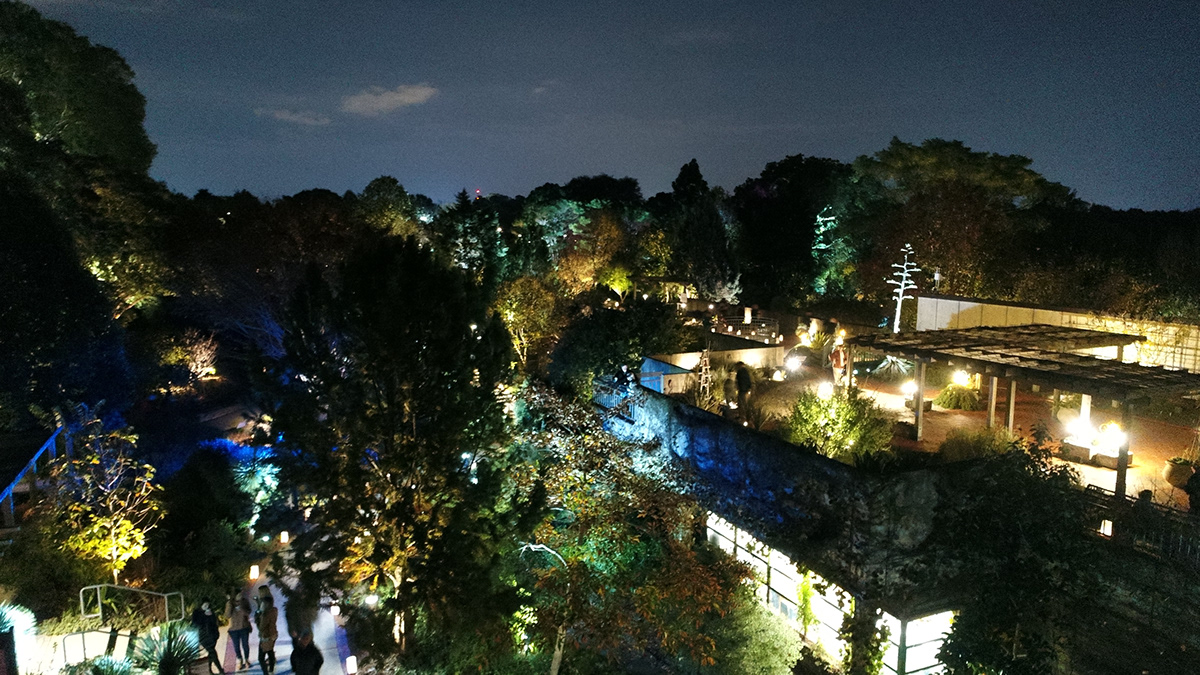

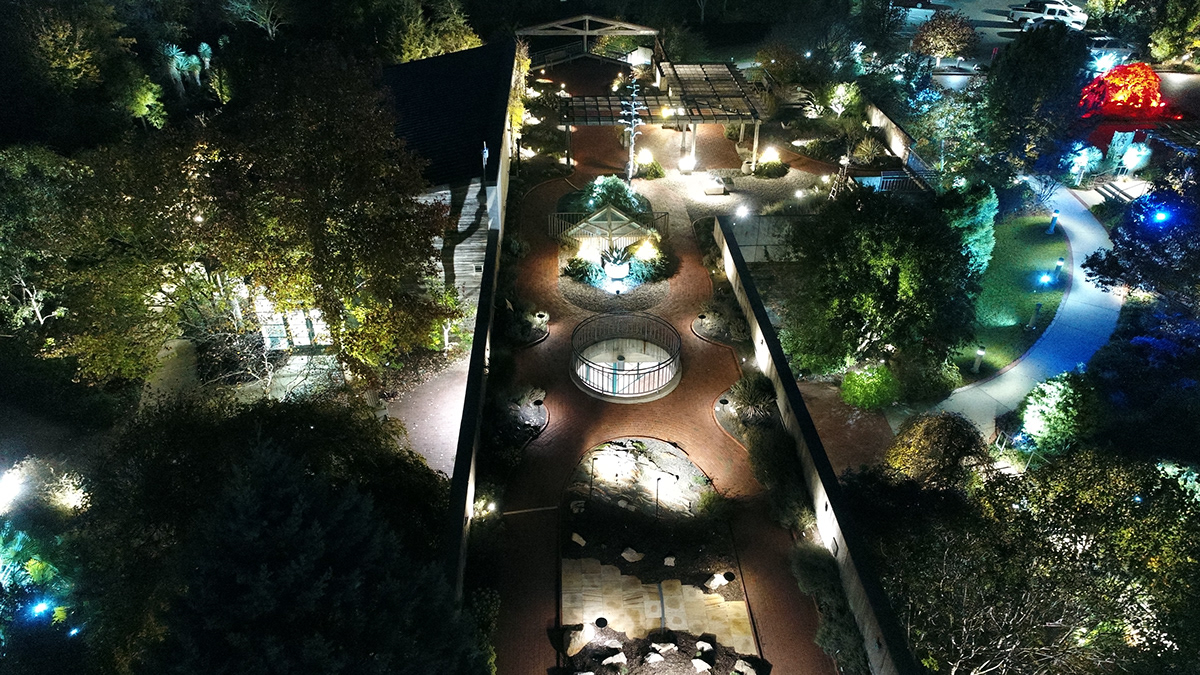
Preview Night, 7-9PM on Tues., Nov. 5, 2019
Register here:
North Carolina Press Release
An interview with Mark Weathington, Director of JC Raulston Arboretum

Mark Weathington, Director, JC Raulston Arboretum – Courtesy JCRA
by Robert B Butler
This interview with Mark Weathington may be republished in whole or part without attribution
Mark, tell us about the JC Raulston Arboretum at North Carolina State University.
“The JC Raulston Arboretum is a research arboretum devoted to evaluating plant material for use in Southeastern landscapes. We have a constantly changing collection, so the hallmarks of the arboretum are the diversity of the plant material that we grow. Based on benchmarking by the American Public Gardens Association, JC Raulston Arboretum is one of the most diverse botanic gardens, ranked in the top 95th percentile in terms of plant diversity. Our two big focuses are bringing in plants and evaluating the, and distributing them to people, and then education people about plants, gardening, and the natural world.”
What is Moonlight in the Garden?
“The Arboretum is a very mission driven organization, so every time we do an event, we look at how it pertains to our mission. Moonlight in the Garden is an opportunity for us to light up the garden and share with individuals and families what a magical place the Arboretum can be at night. The lighting displays and the artistic uses of lights shows how different a garden looks at night and what can be done in a garden to make it a useful space all day and into the night.”
What is the history of Moonlight in the Garden?
“Years ago, Moonlight in the Garden was a very different event designed for a very small number of people in the professional community. 2019 will be the fourth consecutive year of expansion of the exhibition to include children, families, individuals, plus members of the professional community. We’re excited about sharing Moonlight in the Garden on a larger scale.”
When is Moonlight in the Garden?
“Moonlight in the Garden is the second and third weekends in November, Thursday, Friday, and Saturday nights.”
Why November?
“Well, for one, November is the fall-back time change, and that really makes a difference in terms of when the garden gets dark enough to see it well. Along with the colorful and festive lighting exhibition, Moonlight in the Garden is a chance to bundle up, welcome the fall season to North Carolina, dine at the best food trucks, enjoy the live music, have some hot cider, and roast marshmallows over the fire pits.”
How many times per year does the arboretum provide a nighttime lighting exhibition?
“One time. Moonlight in the Garden.”
How many nights is Moonlight in the Garden?
“Seven nights.”
Is there limited capacity each night?
“Yes. We encourage individuals and families to order tickets in advance online.”
When do you begin planning and designing for Moonlight in the Garden?
“When Moonlight in the Garden is over, we take up miles of cable and lights, take a deep breath, and don't think about it through the holidays. But then in January, February, we start thinking about it, making plans, and start moving forward. So, it's really about a full year endeavor.”
How many suppliers, manufacturers, and volunteers are involved?
“The lighting industry has been very supportive in donating and discounting materials. Last year, we had somewhere on the order of 70 or 80 volunteers. Some of the volunteers assist John Garner of Southern Lights with the cable and lighting installation, based on his creative design. Other volunteers help with the luminaries, ticket-taking, hot cider and marshmallows, way finding in the Arboretum, and helping the bands and food trucks each night. Moonlight in the Garden is a huge undertaking and would not be possible without the many hundreds of hours contributed by the volunteers.”
Do children enjoy Moonlight in the Garden?
“Yes. We have lots of activities, but children love being in the garden. One of the most rewarding aspects is the exhibition’s fascination for children and people of all ages. Moonlight in the Garden appeals to every age group in a way that other garden related activities don’t usually do.”
Is Moonlight in the Garden a good teaching moment for children and families?
“I truly believe that children respond well to beauty. Sometimes what they see as beautiful is different from what adults see. I think it's incredibly valid to have children appreciate and enjoy something that just looks and feels magical. While one of our primary focuses is education, Moonlight in the Garden is one of the times when we really want people to enjoy the garden.”
“There's a real problem with what is called nature deficit disorder, where children just aren't connected to the natural world. And anything you do that gets them out and looking at plants, and gardens, and natural areas, is a really important thing, and I think it's a powerful way to instill an appreciation for the environment around them.”
Is Moonlight in the Garden a valuable experience for students, professional planners, and landscapers?
“It is. We do some evenings before we open to the public that are strictly for landscape architects, designers, and landscape professionals to come in and really get a sense of what we're designing, how we're designing, what different intensities of light will do, in terms of cooling things down and heating things up, and showcasing plants, all the up lighting and down lighting, and different ways you can do that. So that's a real focus on the professional side. But then when non-professional people go though, it really gives them a sense of things they could do differently in their landscapes, large or small. My wife is not a gardener, but when she walked through the first time, her first reaction was, "We need to get some lighting in our garden at home." Lighting a garden resonates with people in a really profound way. I think it does inspire people to want to have something like that around themselves.”
The photos are very beautiful, and so many of the displays are magical. Do you think the lighting of plants is an art form?
“It certainly is. The first year of Moonlight in the Garden, I was with a group of about 25 or 30 design professionals. John talked a little bit about what he does, then we started walking through the Arboretum. It was magical and amazing. This is not going to a big box store and buying a kit of lights and sticking them in the ground. There is a real art form and a real thought process that goes into the exhibition being done well. And, if it's done well, you don't know how much thought has gone into doing it.”
What is your favorite exhibit?
"Well, one lighting exhibit we kept on permanent display is called Fireflies, from a lighting artist in Texas. It's basically copper tubes with a relatively dim warm light, and we have them hung at our entrance from our live oak trees. When the breeze blows, they kind of move and look like fireflies above you. When it's still, it's almost like stars, you're seeing the stars through the trees. I really think that's magical."
“Another thing that that people really enjoy is the effects lights, where lighting can be manipulated via your smart phone. Where you can change the type of lighting, the colors and intensity, creating a range of artistic settings and moods from dramatic to tranquil and everything in between.”
“Moonlight in the Garden offers a different way of thinking about your lights outside. Of course, inside, people are doing that more and more with lighting technology. What you can do with your landscape is pretty amazing.”
How does the lighting exhibition change the character and personality of the plants in the Arboretum? And, do plants actually have character and personality?
“Oh, plants definitely have character and personality. The form of plants is something that those of us who spend all their time looking, thinking about plants, we take it for granted a lot of times. But other people, they'll walk through a garden and say, "Isn't this lovely." Especially in the spring when the flowers are out, and that kind of thing. So, when you start lighting, like some of these beautiful Japanese maples that are weeping that have this really just striking form, this sculptural form, all of a sudden, people who otherwise wouldn't normally pay that much attention an individual tree, start looking at it as though it is a piece of art. Or, a plant that has a really wispy branches, or a grass that moves in the breeze, and the way that gets lit really accentuates that movement of the plant and it brings a new life to the garden. There's one area where there's moonlighting, as we call it, and these are these soft, kind of white, cool lights, set up high in the trees that you can’t see, that cast this glow across the ground. It really feels like walking out in a moonlit night. And because it's that silvery white light that you would get a full moon, some of the plants there that have a little bit of silver in the leaves and white in the leaves, really shine and reflect back some of that light. And it really gives you this appreciation for not just some of the trees and shrubs, but for the evergreen perennials and flowers kind of give off. They almost glow as you walk through there.”
What else can visitors expect to see and enjoy at Moonlight in the Garden?
“Well, we always do something unusual, something different, in terms of an artistic look. Keep an eye open this year for Raleigh's new five-star Air Bee & Bee. I think that'll be a lot of fun. Combined with the inspiring and colorful lighting exhibition, Moonlight in the Garden is bringing in preferred food trucks, first-rate live entertainment with local musicians, warm apple cider, marshmallows, and fire pits. We make it a lot of fun and a value for the family.”
What happens to the proceeds?
“The proceeds from Moonlight in the Garden help fund our mission driven activities. We're part of North Carolina State University, but we have to generate about 84 percent of our operating costs. So, we are mostly self-funded. These programs help us underwrite our education, especially our children's education programs. It helps us underwrite staff, mostly our gardening staff and our education staff. And help us pay the bills, keep the lights on, pay for phones and internet, that sort of thing.”
What is the relationship with JC Raulston Arboretum to North Carolina State University and the foundation at NCSU?
“The arboretum is in the Department of Horticultural Science, so I report to the department head of Horticultural Science. We are a living laboratory for the university, so we have horticultural students who come out and do landscape construction projects do plant ID, learn soil testing, fertilization, and really use the arboretum for a variety of hands on learning experiences. But we also work with the forestry department because we have a wide range of plants, and they'll use the arboretum to work on making Christmas tree hybrids that are more heat tolerant and better for North Carolina. We work with entomology students who come out and trap and test insects, and the School of Design does projects out here. Really, we hit a wide variety of students who are engaged with mostly the life sciences, but also Chemistry, AG engineering, and AG education, all use the arboretum at various points.”
“So that's how we relate with the University. The North Carolina Ag Foundation, which helps fundraise in a lot of ways, is the development arm for the college. We operate under the umbrella of the NC Ag Foundation, so we're not a separate private nonprofit entity. We do all of our fundraising and revenue generation through the Ag Foundation.”
When did the arboretum begin?
“The arboretum began in 1976. Doctor JC Raulston, our namesake, came to the university in late 1975, and really started almost immediately planting in the ground. When JC was hired, he was tasked, in part, with growing the North Carolina nursery industry. He had been several other places around the country, and he used what he called the 90, 40 rule meaning 90 percent of the plants that you could buy were the same 40 plants. Or, another way to look at the rule, 40 plants made up 90 percent of the plants you could buy. It might be different plants in North Carolina than in Texas or Florida, but still, there was a very limited palate of plants that were out there. His feeling was, it was going to be very difficult to grow the industry if everybody was growing the exact same things.”
“So, JC Raulston, in his words, set out to diversify the American landscape, and just started collecting plants from all over the place, from nurseries, from wild collections, and planting them, and seeing what plants are good for the area. For a lot of gardens, that's kind of where it stops. They grow things, and then the mindset is, people will see these things, they'll think their fantastic, they'll go ask their local nurserymen to get them, and the nurserymen will get them. But that's not the case. Nurserymen need a pipeline of supply of new plants in order to get those to the public. So where JC differed, other than just being so voracious in terms of bringing in plants to evaluate, was the other end of that. That was really supplying plants to the nursery industry, to plant breeders, to other professionals and gardens, to really get them out.”
“JC Raulston has been called a plant evangelist, and it really was all about getting the plants form the arboretum into the producer’s hands, so it could get to the end user. In that, he was incredibly successful. And a lot of people think that JC introduced just hundreds, and hundreds, and hundreds of plants. That's not really the case. He introduced the right plants to the right people, and the right people to the right plants, so that they entered the marketplace.”
And do you continue that today?
“We continue that today very much so. Things have changed a little bit. Now, if you go into just your local big box store, the plants that are available are more diverse than what you were able to get 40 years ago at a very good independent garden center. So now, a lot of what we do with the plants that are being released by the nursery industry, is evaluate them to see which ones are the best, which ones are really good performers, and to let people know that. But we also work very closely with all kinds of folks, plant breeders, nurseries, individuals, to evaluate plants that people think might have potential, so see how do they grow under real life conditions? How do they look? Some of those trials are very formal trials, where we have written agreements and signed contracts, others are just people just sharing plants and saying, "Let me know what you think."”
“We also go out and do wild collecting. We wild-collect throughout the Southeast and other areas of the country, the Southwest, and bring in plants and evaluate them. And we go to different countries, Taiwan, Japan, China, places like that and collect and evaluate plants. Sometimes, that's to see if those individual plants are going to be good for the nursery industry, other times it's to bring in new genetics for plants that we already grow, and to get those into the hands of the great plant breeders that are around so that they can bring in perhaps more heat tolerance, or more cold tolerance, or disease resistance into plants that we're growing. There's always questions around that. There are a lot of rules and regulations, and inspections, and things that we do. And we're very careful to follow all the rules and regulations, and make sure we're not bringing in anything that could become a pest down the road.”
How many plants and species of plants can be found at the arboretum?
“There about 7400, give or take, different types of plants. The term we use is taxa of plants, and those are different plants. So, we grow a couple of hundred Japanese maples, which are all the same species, but each of those are different selections, cultivars of Japanese maple, so each one is very different from the other.”
Where is the arboretum and how big is the arboretum? And do you have satellite locations?
“The arboretum is on Beryl Road, in Raleigh. You can access Beryl Road on Hillsborough Street across from the Meredith College campus. The arboretum is 10 and a half acres. We do not currently have any satellite locations. We do share plants with other extension stations across the state, partner sites, so we can evaluate plants growing at the coast and in the mountains.”
What are the future plans for the arboretum?
“Future plans are to continue with the research that we do, the evaluations and trials that we do. We have for the first time a dedicated plant breeder on staff, Doctor Denny Werner, who was previously director of the Arboretum and a faculty member in the Department for Horticultural Science. We have a couple of new red buds that we're going to be releasing this fall. We are looking at a larger partnership, which would ultimately create a satellite location, but that's not all finalized yet, but that is a goal for the Arboretum, is to have more space for that. We're looking at partnering in some ways with Dix Park in downtown in Raleigh, to work with them. We see gardens not as competition, but as all of the gardens working together for the public good. There's so much room to do all kinds of things out in the community that the more we can work with other folks and leverage what we do to get it farther out there is all to the good.”
“We have what we call a dynamic collection. With our limited acreage and our mission to evaluate plants, we are always removing plants and putting in new things, so there's a constant turnover of plant materials. So people can always expect to see different things. Invariably, we cut down or remove somebody's favorite plant, but that's just the nature of what we do, it's constantly evolving.”
“We're currently working on the second update of our master plan, our grounds master plan, so we're actively in the process of updating that design. Last iteration was in 2013, so we try and do that every five years or so. A lot of growth and change coming in the next few years.”
What other programs are offered by the Arboretum?
“Well, we do a lot of children's programing as well. We do very much science, steam based educational programming for kids, summer camps that are all tied back into the science, the mission of what we do, programs starting with preschoolers, with garden story times, all the way up through middle school and high school. And a lot of that is because we're trying to develop the next generation of horticulturists and green industry professionals, but also to instill a real appreciation and love for plants. One of the keys to working at the arboretum, is you have to be passionate about plants. That's the baseline. If you're not passionate about plants, you're not going to be able to translate that passion that we have out to the public, at all levels. That's really important to us. That's a big part.”
“We embody the land-grant mission of research, teaching, and extension. I think we're kind of the key to that. What I often tell folks at the university when we're talking to them, is that other than athletics, the JC Raulston Arboretum is the most visible public face of the university beyond athletics, that's a whole separate thing. We're a way that a lot of the community here locally, regionally, and beyond really, their only connection to NC State, is the JC Raulston Arboretum.”
If an individual or organization would like to support the mission of the Arboretum, what is the best way to do that?
“Membership is very important, and we have different membership levels to meet the needs and interests of individuals and organizations. They can always get in touch and we can talk. If an individual or organization has specific interests that matter to them, there are so many opportunities to help further the mission of the JC Raulston Arboretum, and help them achieve what they'd like. People have so many different passions themselves, whether that's education, or garden, or they want to have a memorial for a loved one or something to recognize somebody special. Memberships, sponsorships, and donations ensure a healthy Arboretum.”
“Volunteering is a big way to support to Arboretum. We have all kinds of volunteer opportunities, from indoor activities for people who don't want to be out gardening. Everything from office support, helping us get mailings out, data entry, analyzing data, to interacting with the public at our visitor’s center and front desk, to working in the garden, working special events, working with our education folks to bring programming to children or to adults. Volunteers are vital. Last year, 2017, our volunteers put in over 12400 hours of volunteer service.”
Thank you for your time, Mark.
This interview with Mark Weathington may be republished in whole or part without attribution.
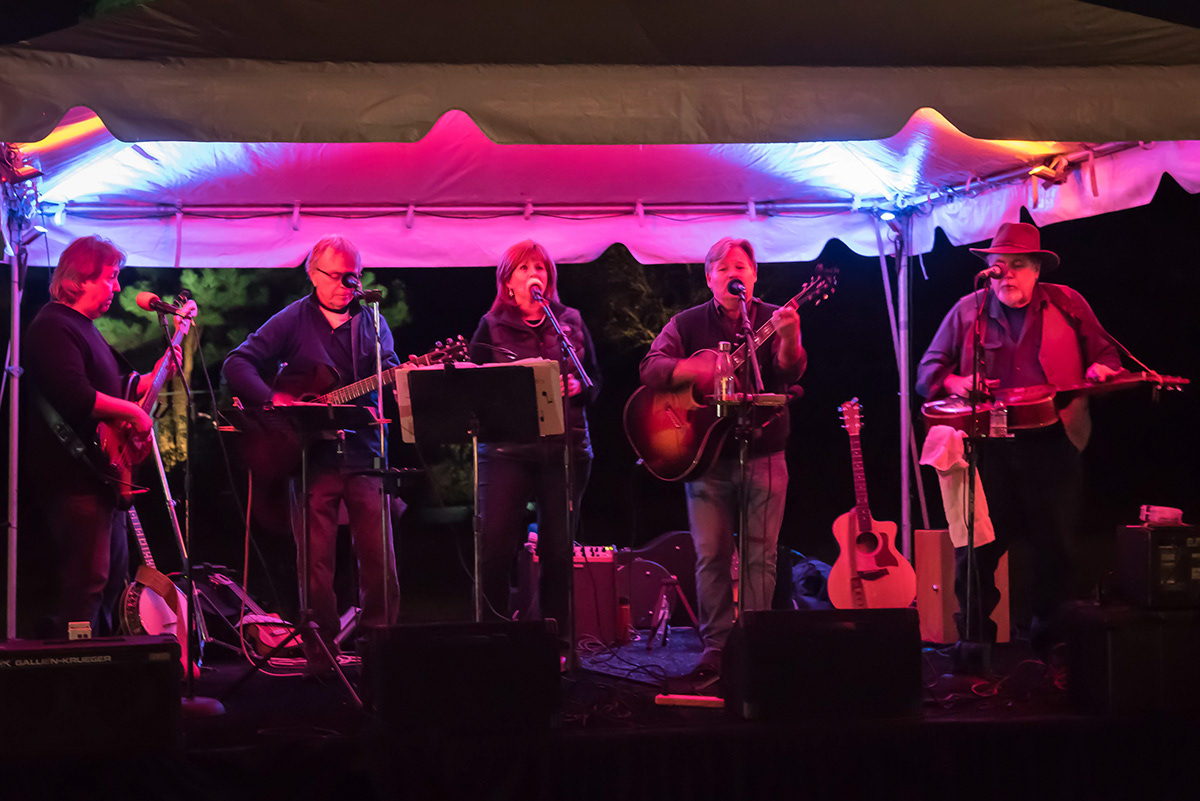
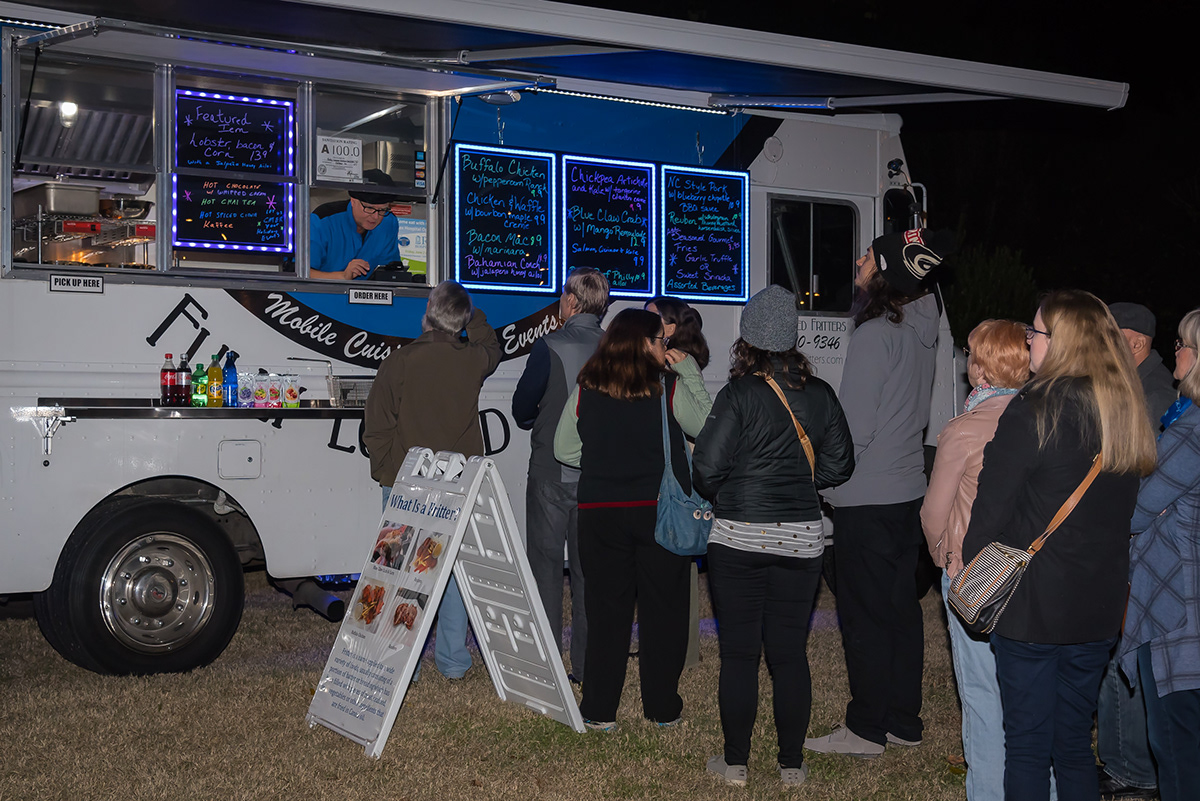



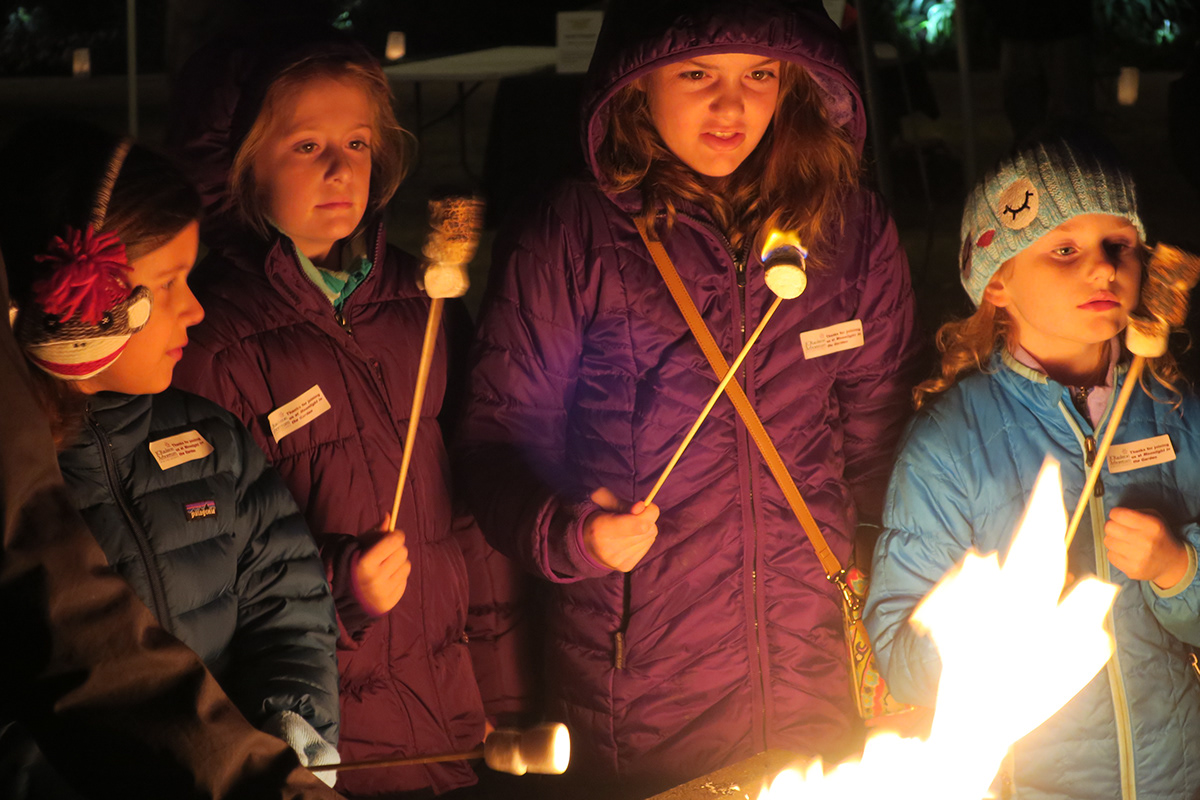
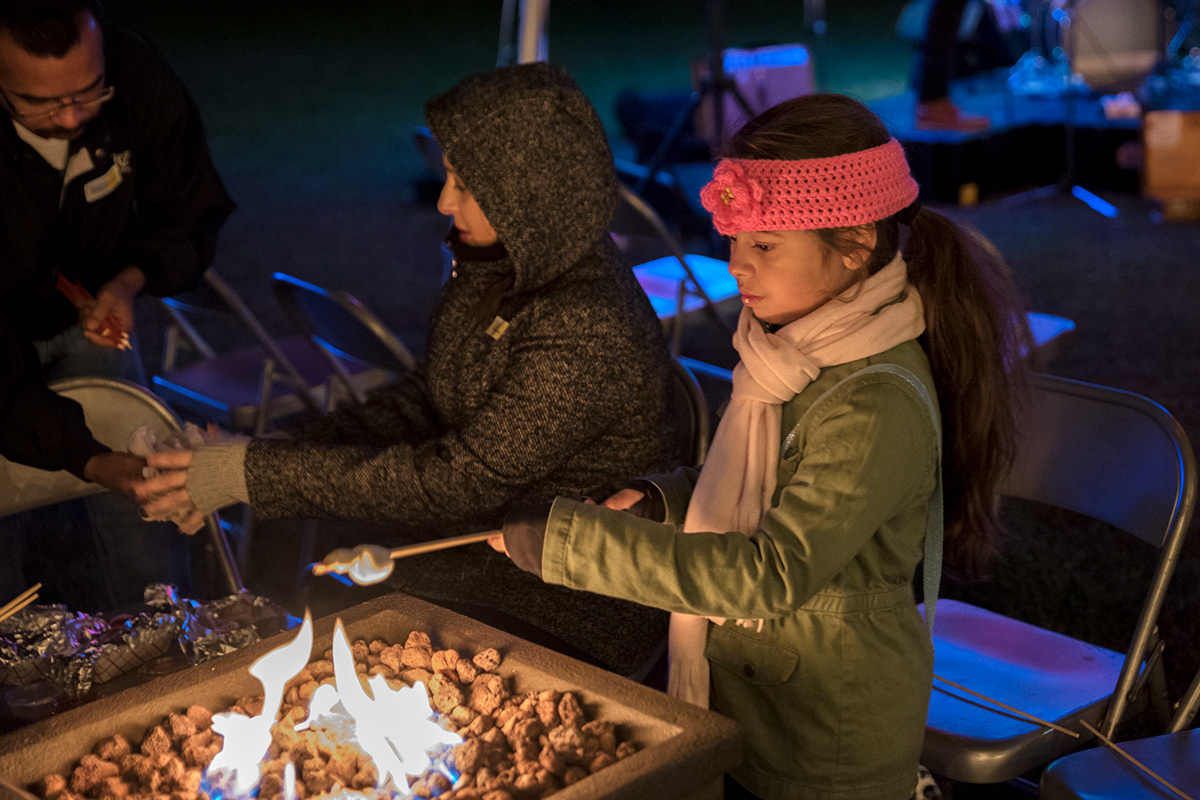

North Carolina Press Release
An interview with John Garner, Volunteer Chair for Moonlight in the Garden
and President of Southern Lights of Raleigh, NC

by Robert B Butler
(This interview with John Garner may be republished in whole or part without attribution)
How would you describe Moonlight in the Garden?
“Moonlight in the Garden is a huge lighting exhibition at North Carolina State University’s JC Raulston Arboretum and botanical garden. It's a rare opportunity for the family to visit the Arboretum after dark and see how trees and gardens can be illuminated for activities using the latest technologies on the market. It only happens once a year, so it's a very limited opportunity to see the Arboretum in a new light. Proceeds benefit the Arboretum.”
When will Moonlight in the Garden debut and for how many nights?
“Moonlight in the Garden is scheduled for two weekends in early November for a total of six nights. With limited capacity each evening and only six nights, families and individuals should go online and book their tickets early. We expect another sellout in 2019.”
“We’ll have one additional night for professional members of the community, including landscape architects, lighting designers, architects, engineers, and other professionals. Continuing education credits will be provided by the NC Board of Landscape Architects to participating landscape architects.”
When do you begin planning and designing Moonlight in the Garden and what is involved?
“We start talking and planning about six-months in advance. We fine tune displays and do something different every year.”
“We use over five miles of cable powered by over 20 transformers to showcase the latest and best available lighting technologies. The list includes color changing systems, moonlighting trees, interactive multi-circuit zones, smart phone controls, and more. There are some surprises this season playing with shadows and motion in the garden and that sort of thing. Including Southern Lights, we have about 15-20 suppliers. Our suppliers are very generous with their donations to support the Arboretum.”
“The Kelly Francis illumination fireflies are now permanently installed at the entrance of the Arboretum, and we expect stone artisan Bob Simchock to return this year and share some of his stone light creations.”
“An interesting side note, using the latest illumination technologies, illumination power consumption has been reduced about 90-percent over the past 20-years.”
Is outdoor lighting an art form? And, do you consider yourself to be an artist?
“There's definitely an artistic element to lighting. I've never really considered myself an artist in the sense of having showings in museums. But you can create a whole new environment with light, and it does definitely take an artistic flair to get it right.”
“A well-designed lighting application creates mood, comfort, and functionality, bringing landscapes to life and creating a pleasant, livable, and more usable space for inhabitants.”
What is your favorite exhibit at Moonlight?
“My favorite exhibit is the area that we call Moonlight in the Garden. It's where you walk from the Japanese garden into the Asian Valley behind. The moonlight changes from a warm color to a cool moonlight from above that's filtered through the limbs of the trees. It's just a complete change of feeling of mood as you go through there. I've often wanted to play the theme from Twilight Zone, as it feels you are traveling in a portal from one world into another. So that's my favorite.”
Tell us about some of the unique plants on display and how the lighting changes their character and their personality.
“We try to light each tree and plant to its best advantage by respecting its form. There's the Weeping Walk, the walkway entering the Arboretum leading to the Great Lawn. Some of these trees are best shown lit from the inside highlighting the trunks. Others are the best lit from the perimeter where it highlights the outer canopies. Still others are best cross lit while others from above. We use all different techniques to highlight the various trees and plants. There are wonderful specimens of large trees and Japanese maples that are just a real treat to put in a new light, if you will. That's one of the pleasures of doing this, having the opportunity to play and create in a garden of this caliber. It's a really neat place.”
Do children enjoy Moonlight in the Garden?
“Absolutely. People of all ages love lighting exhibitions. Additionally, there are plenty of activities for children, including the firefly making session, spinning shadows, marshmallow roasting, food trucks, music, and more.”
Is Moonlight in the Garden of good teaching moment, a good outing for children and their families?
“A key concept of Moonlight in the Garden is introducing children and families to thousands of plants at nighttime, showing how nature can be illuminated, providing ideas people can use with plants in their own gardens, large or small. The Arboretum is set up like a park and has many display gardens. This is a wonderful educational experience for children and parents.”
What other activities are on the schedule for Moonlight in the Garden?
“Moonlight in the Garden provides a backdrop and a setting for the activities that are offered. There's a different band every night, gourmet food trucks, marshmallow roasting, hot apple cider, and lots of activities for the children.”
Why do you take on such a monumental project?
“Moonlight in the Garden is a great way to educate the public about trees, gardens, and how plants interact with our lives, both day and night. Nature brings joy to life and illumination at night reveals new dimensions of nature.”
“The Arboretum helps the people of North Carolina and the landscape industry with information, education, and the products they help to provide. I feel good about helping the Arboretum.”
Thank you for your time, John.
This interview with John Garner may be republished in whole or part without attribution.

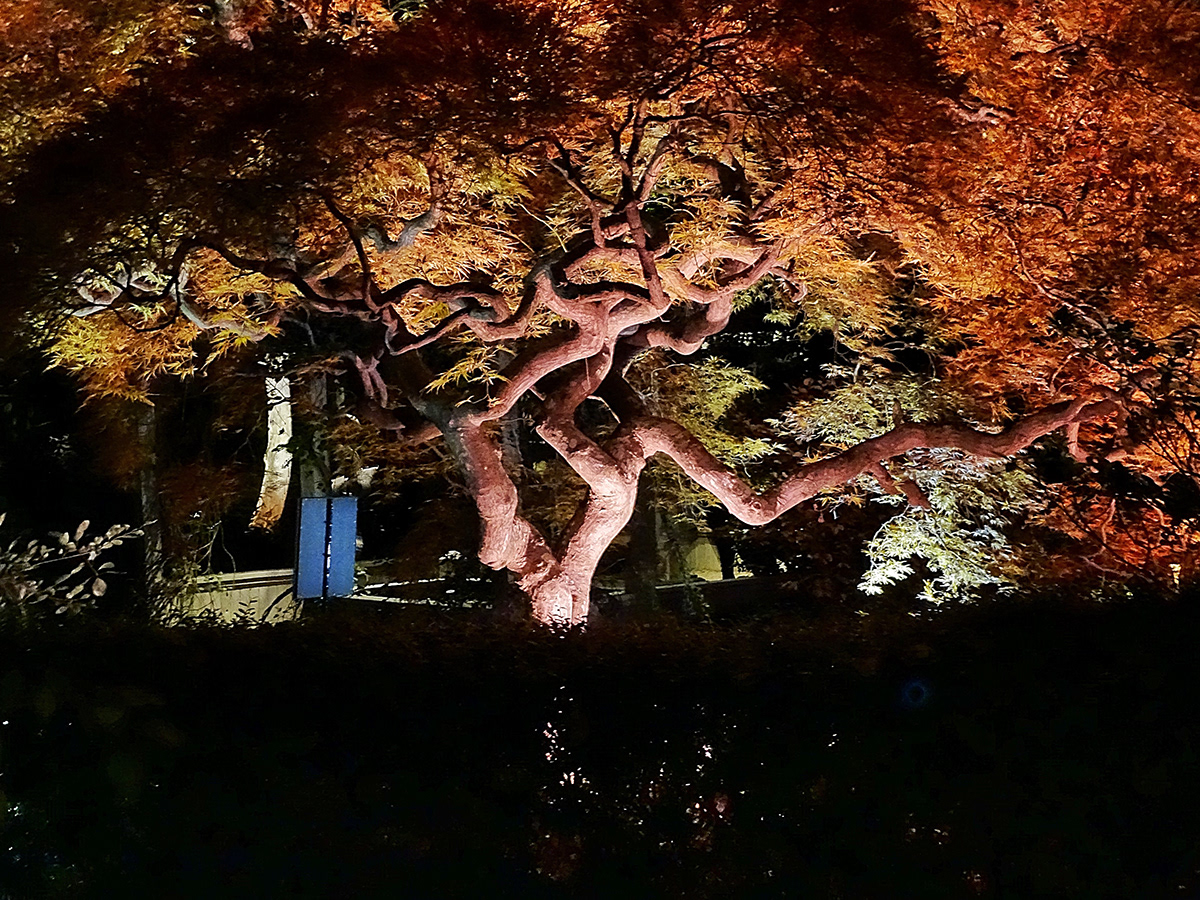

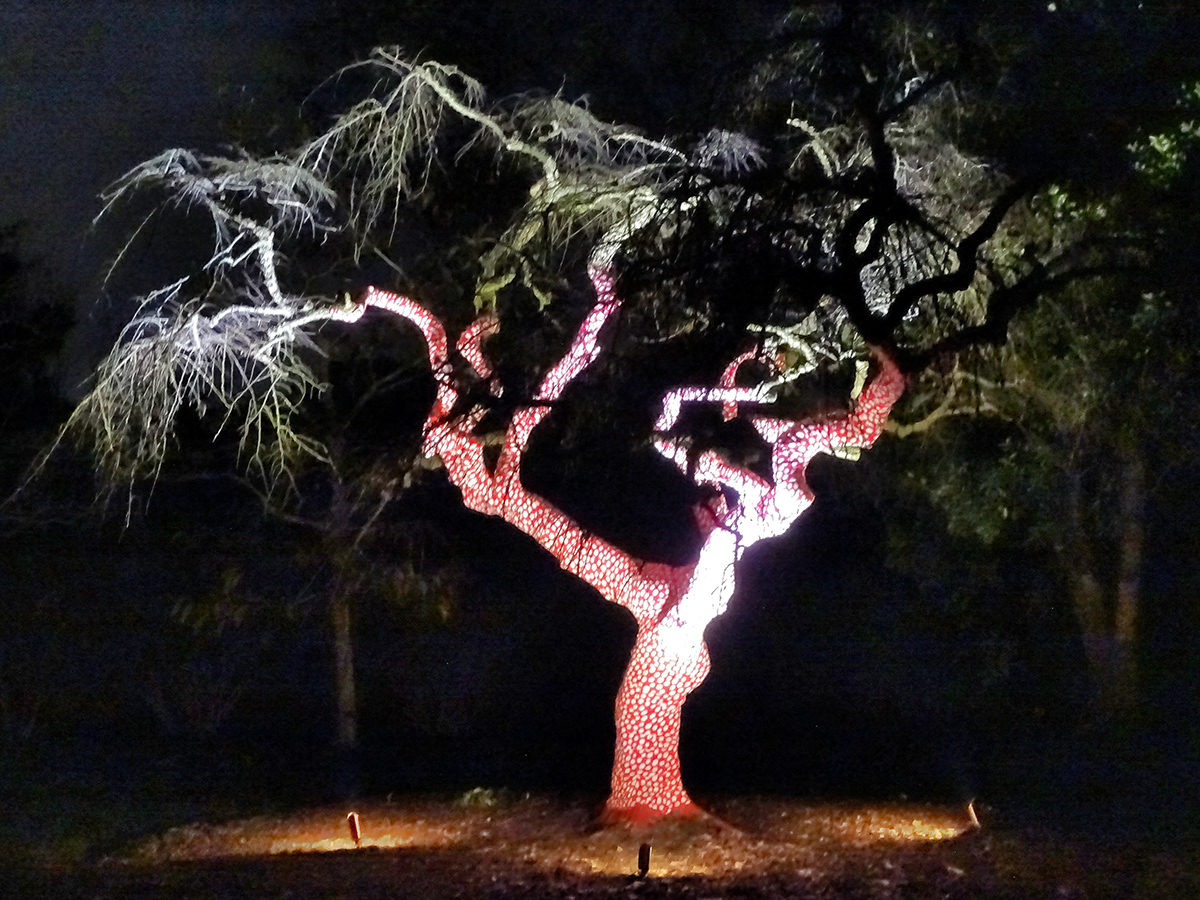
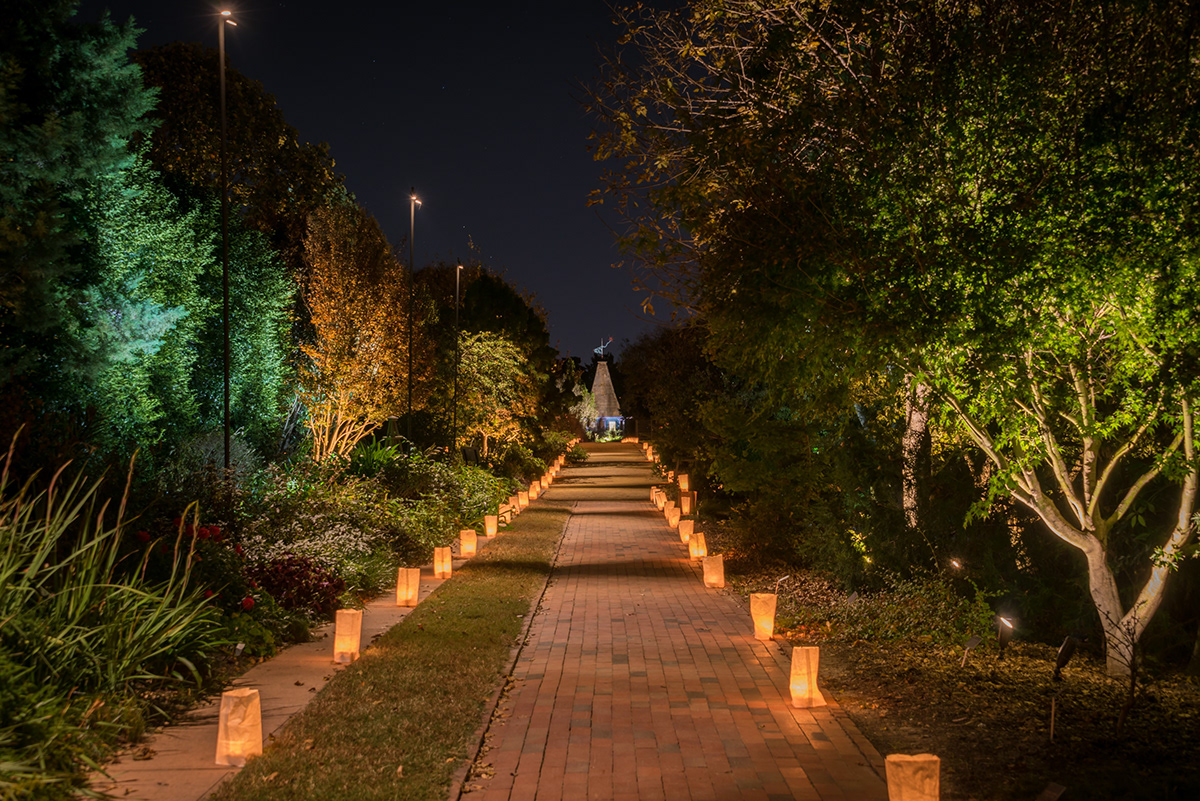
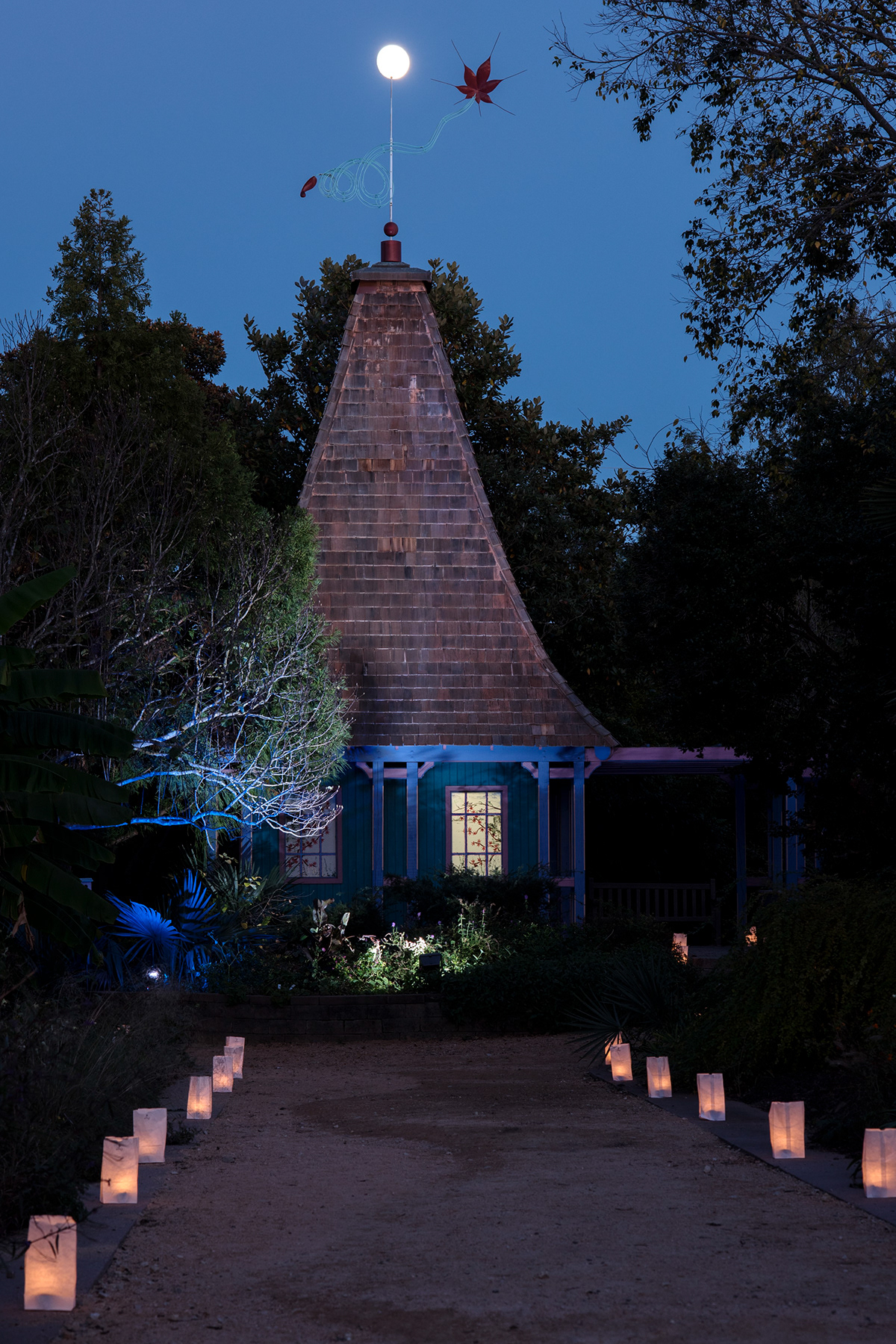

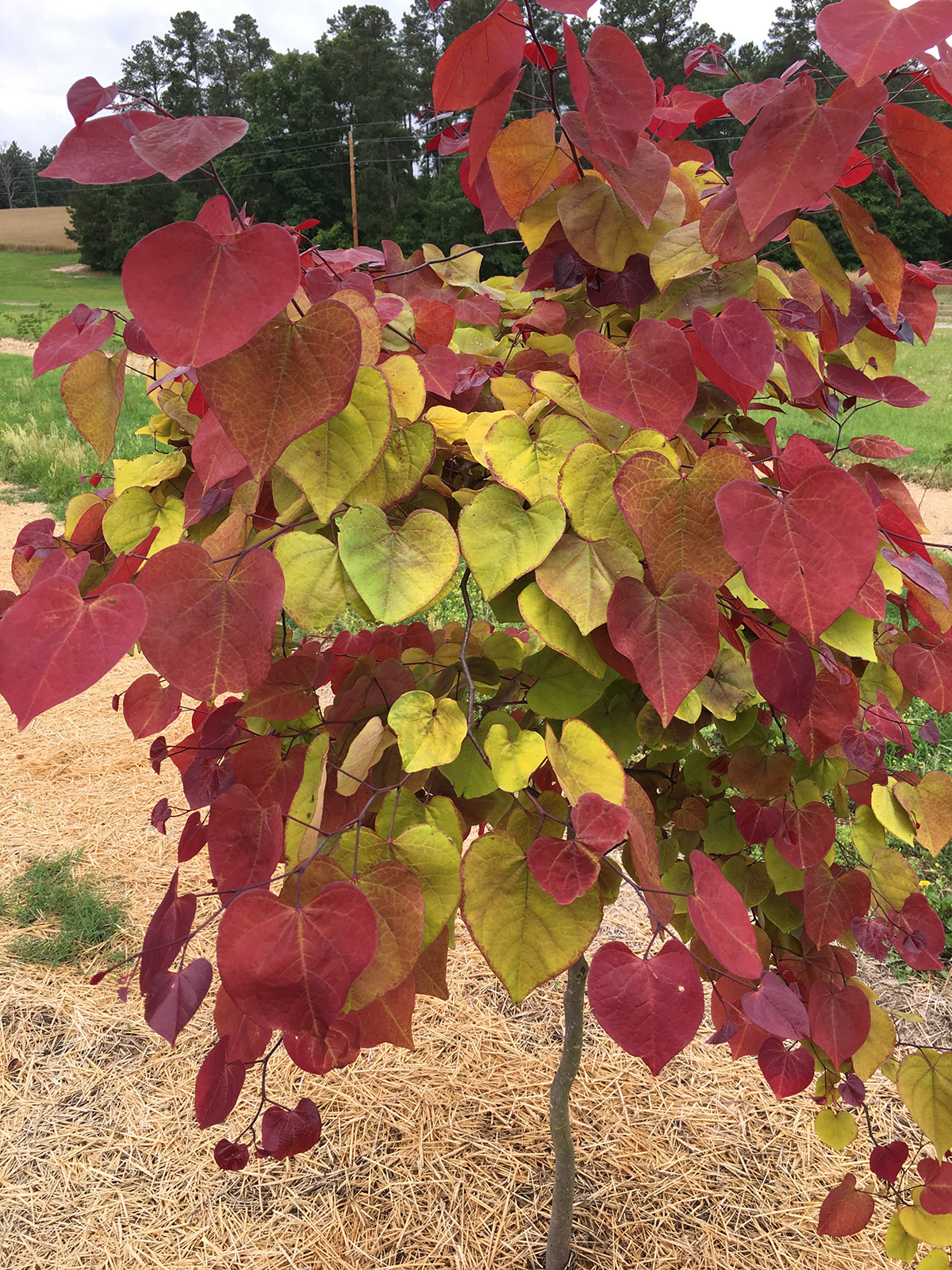
The Flamethrower Redbud Tree – JC Raulston Arboretum at North Carolina State University

Carolina Brewing Company Ambrewlance
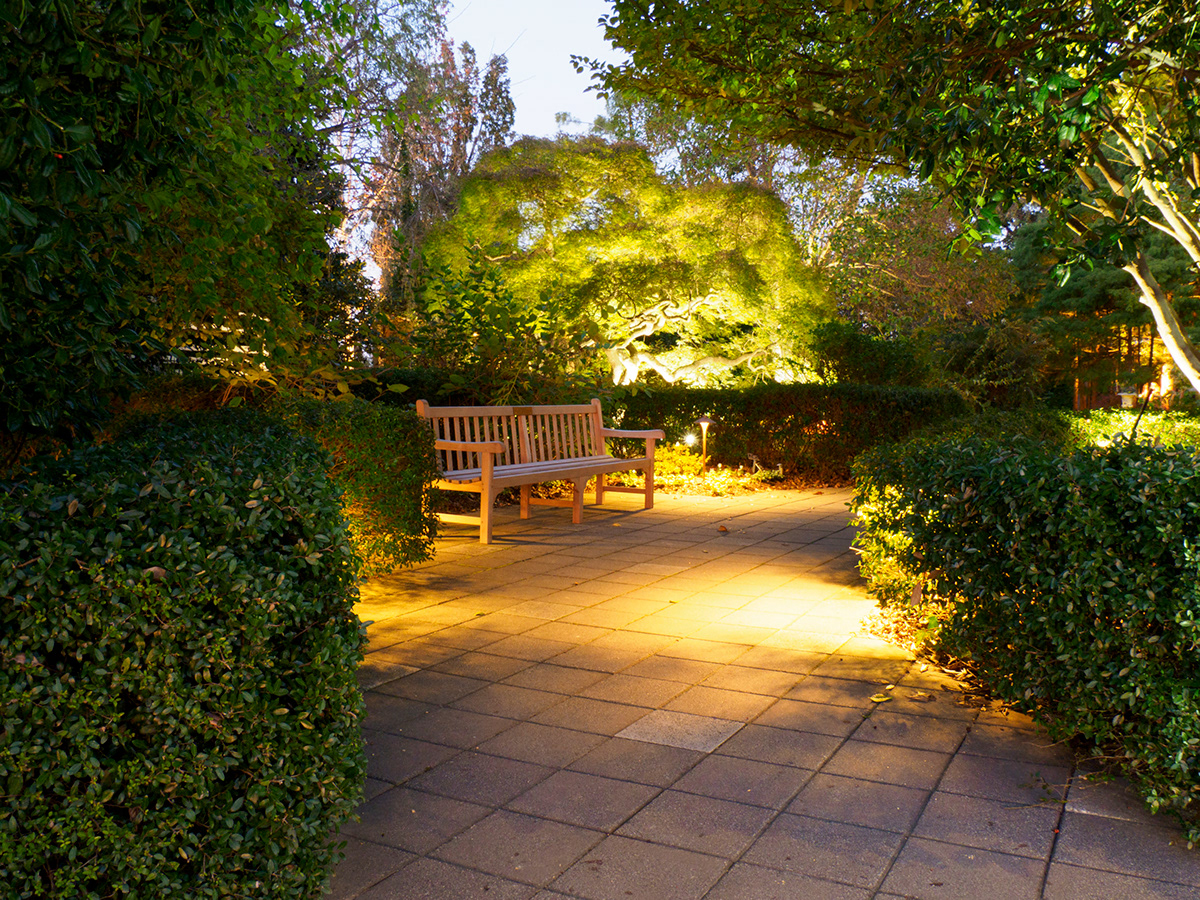



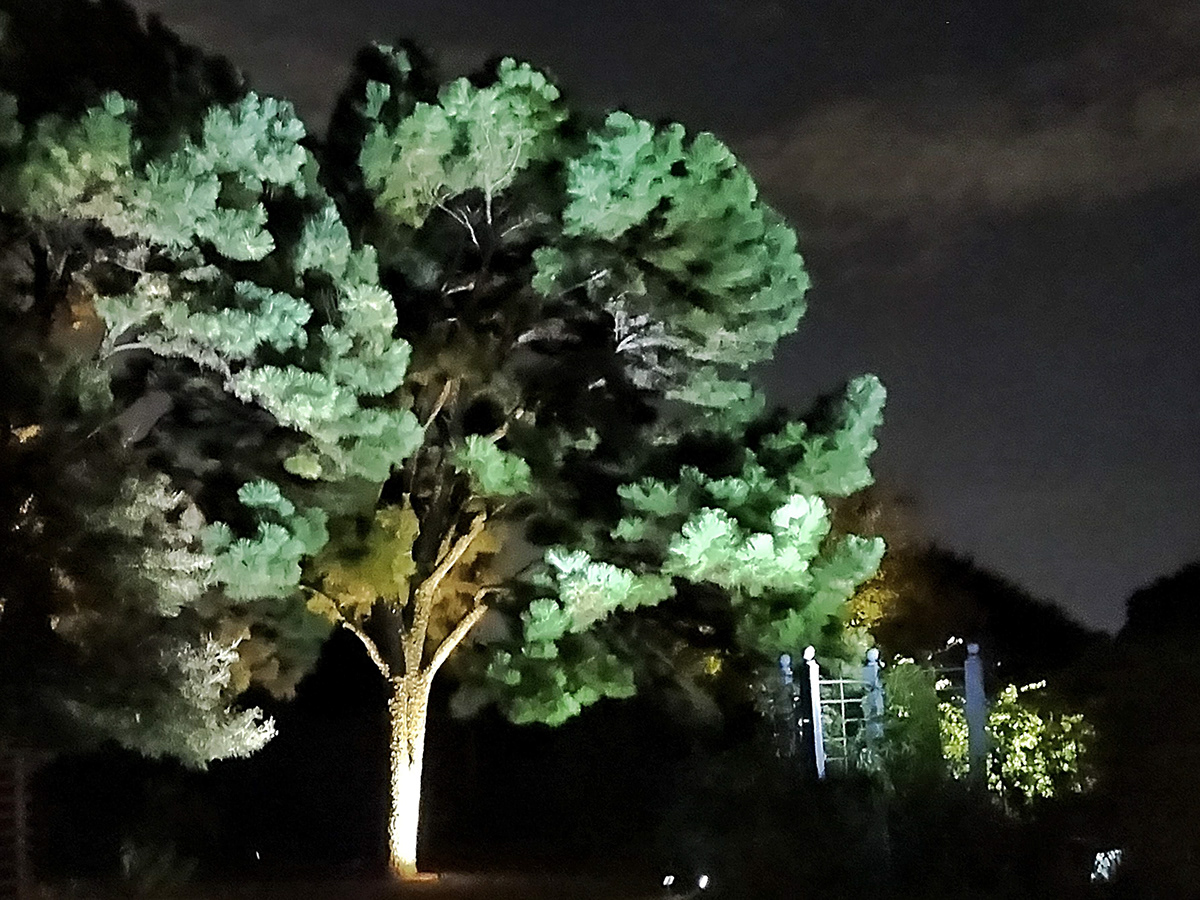
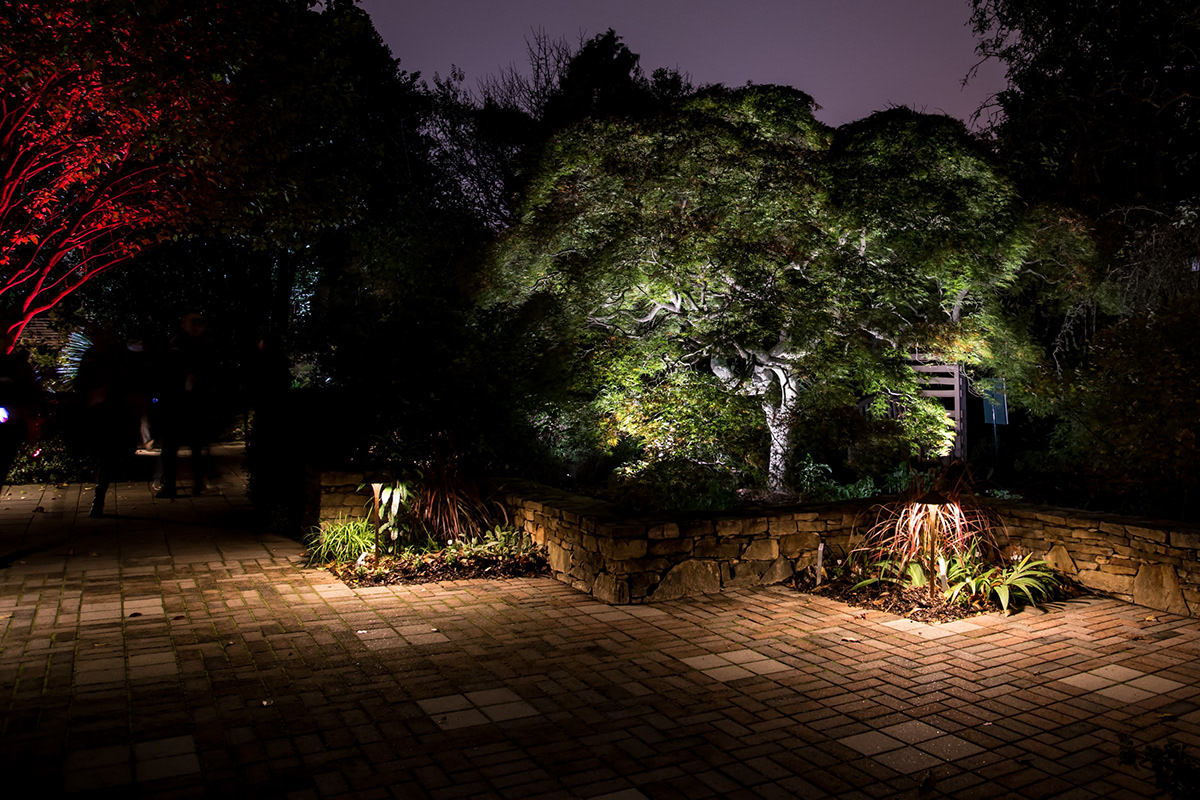

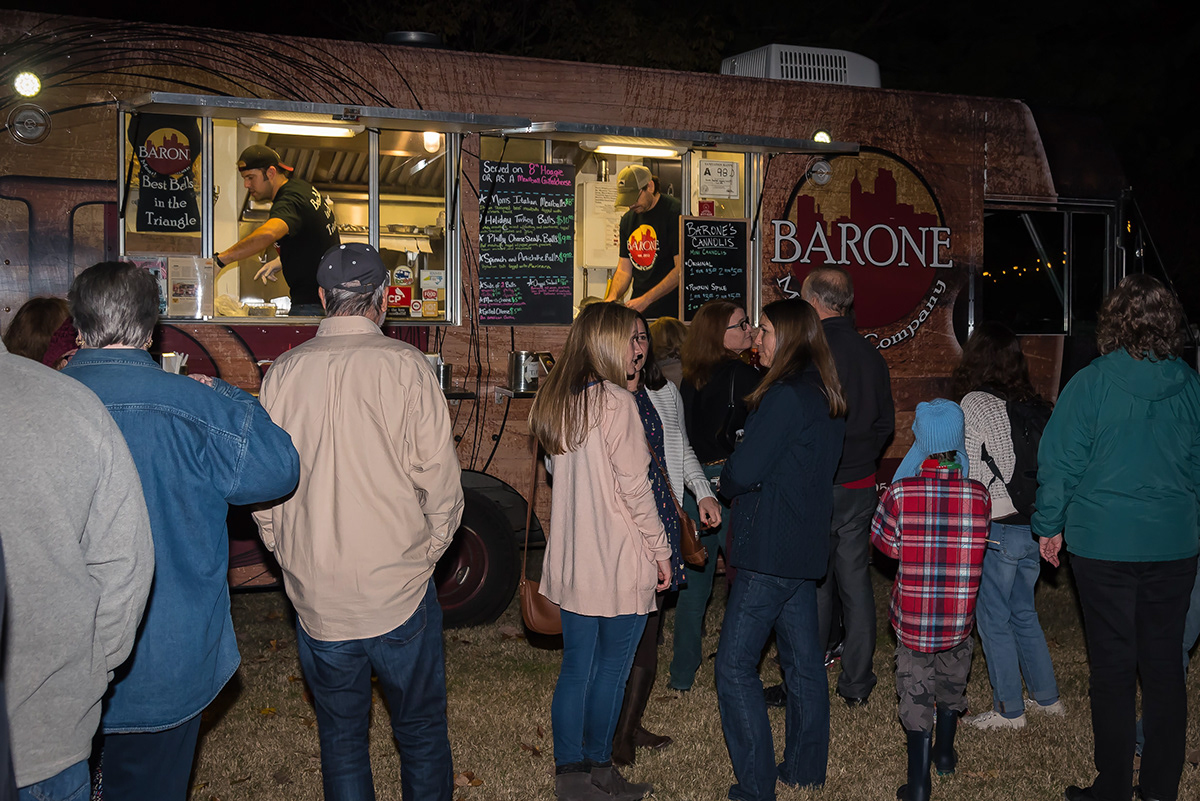
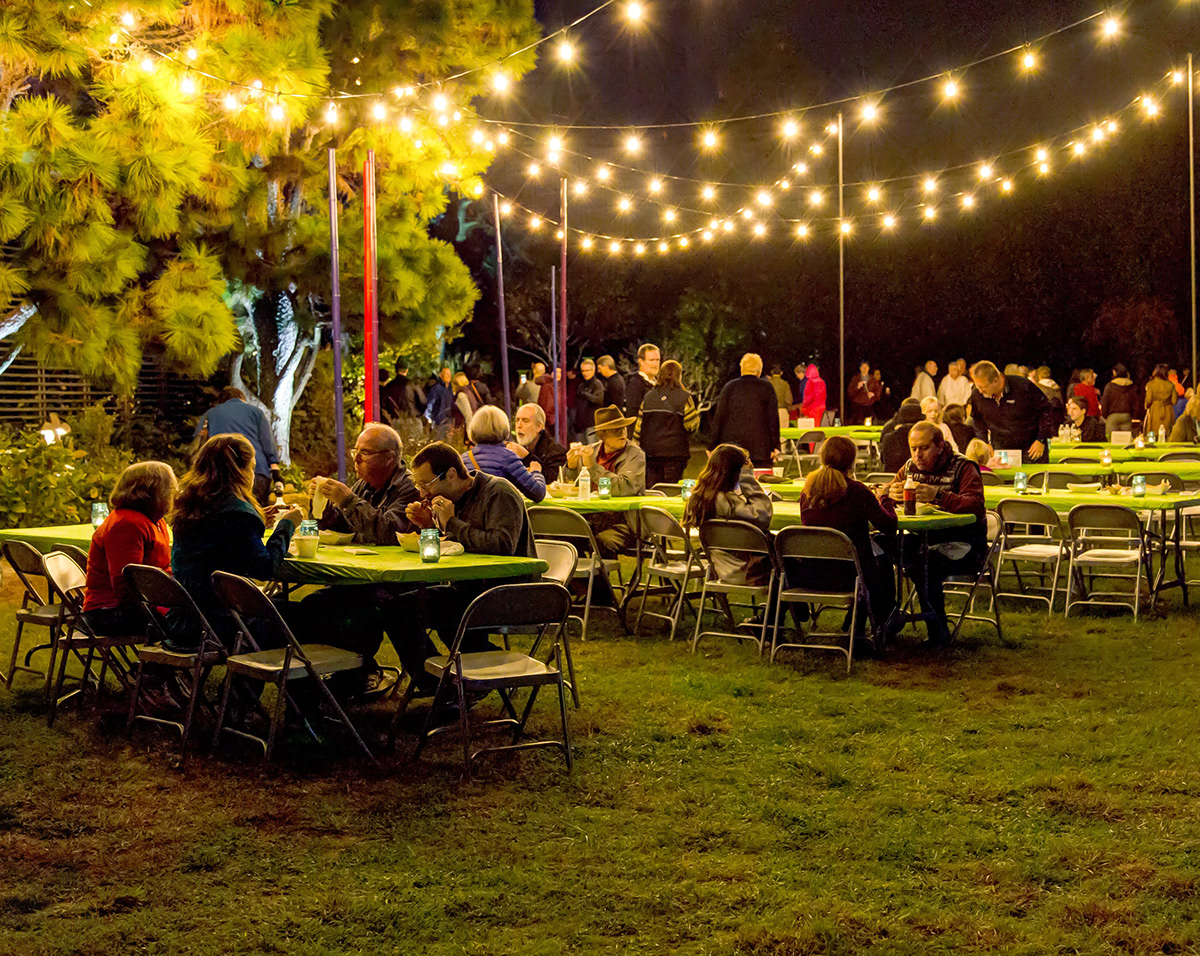
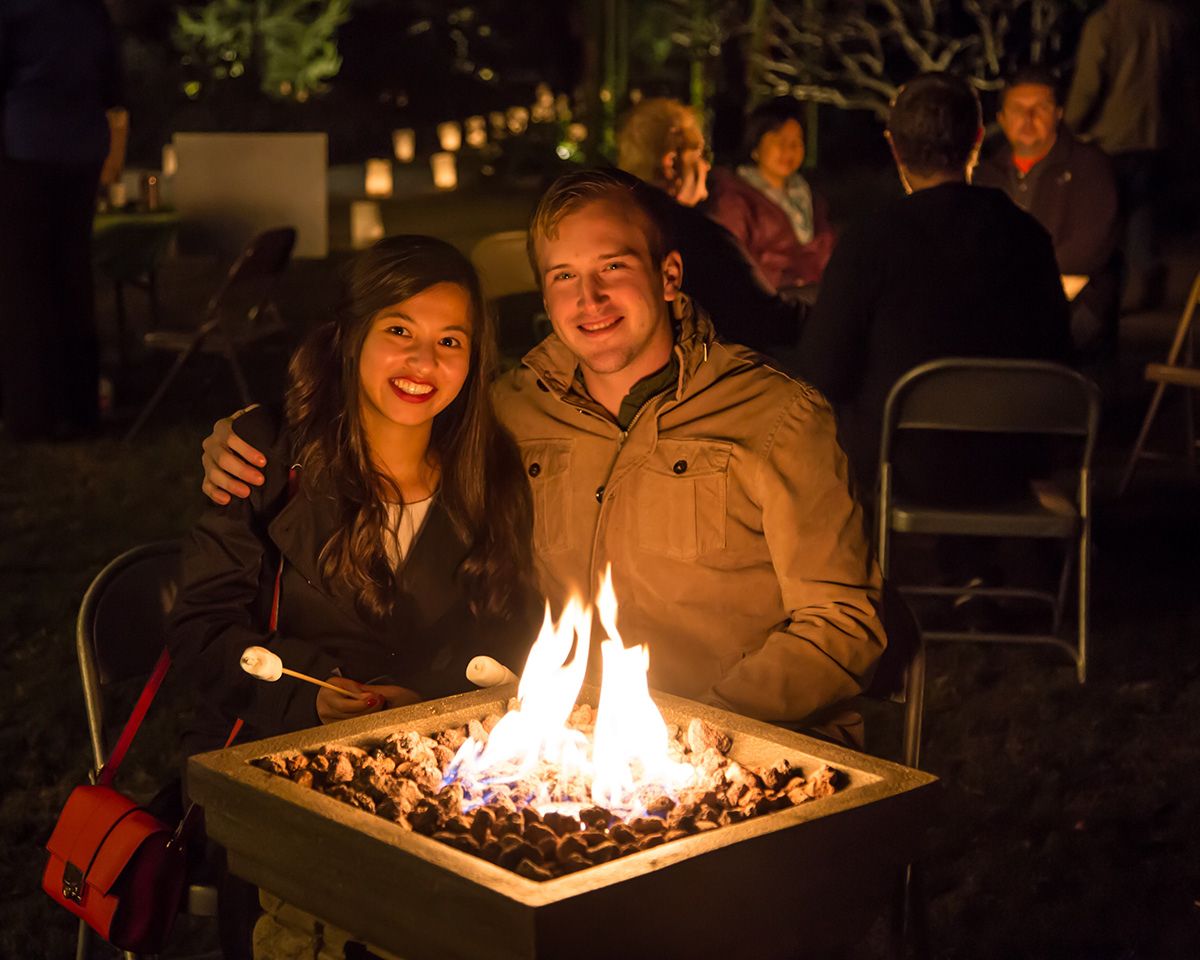


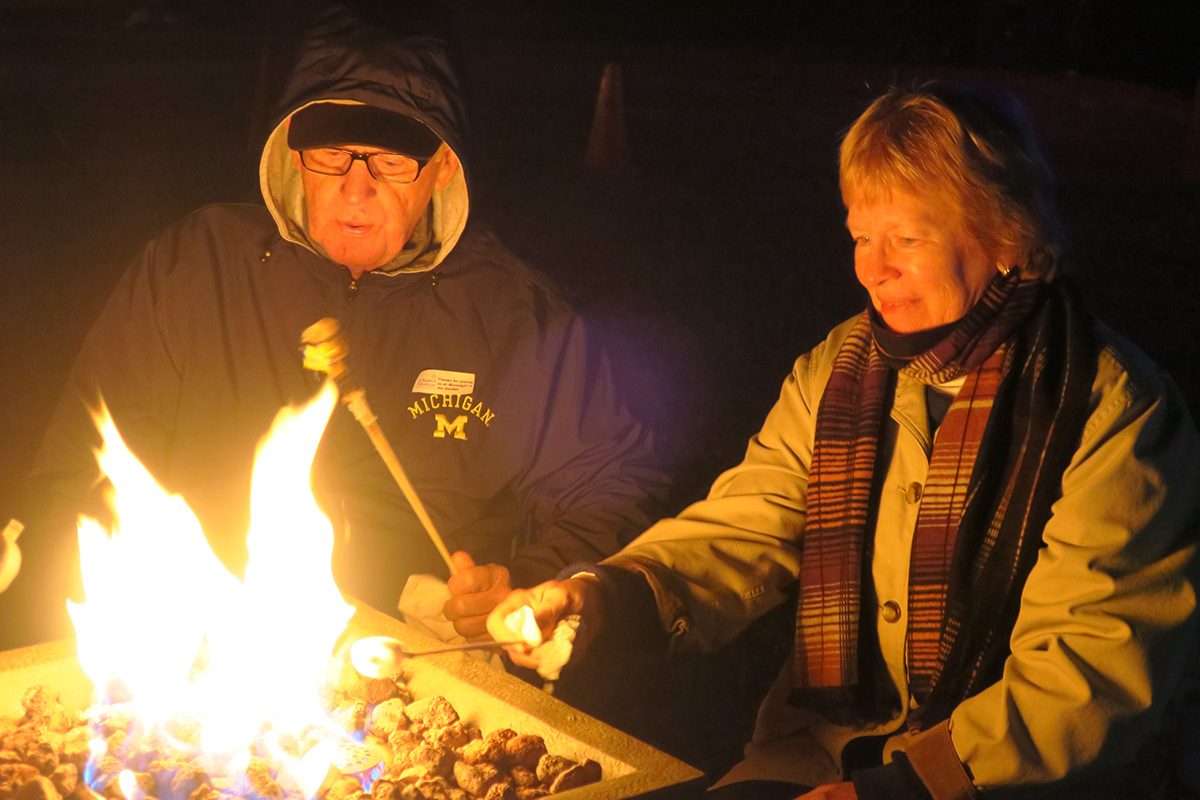

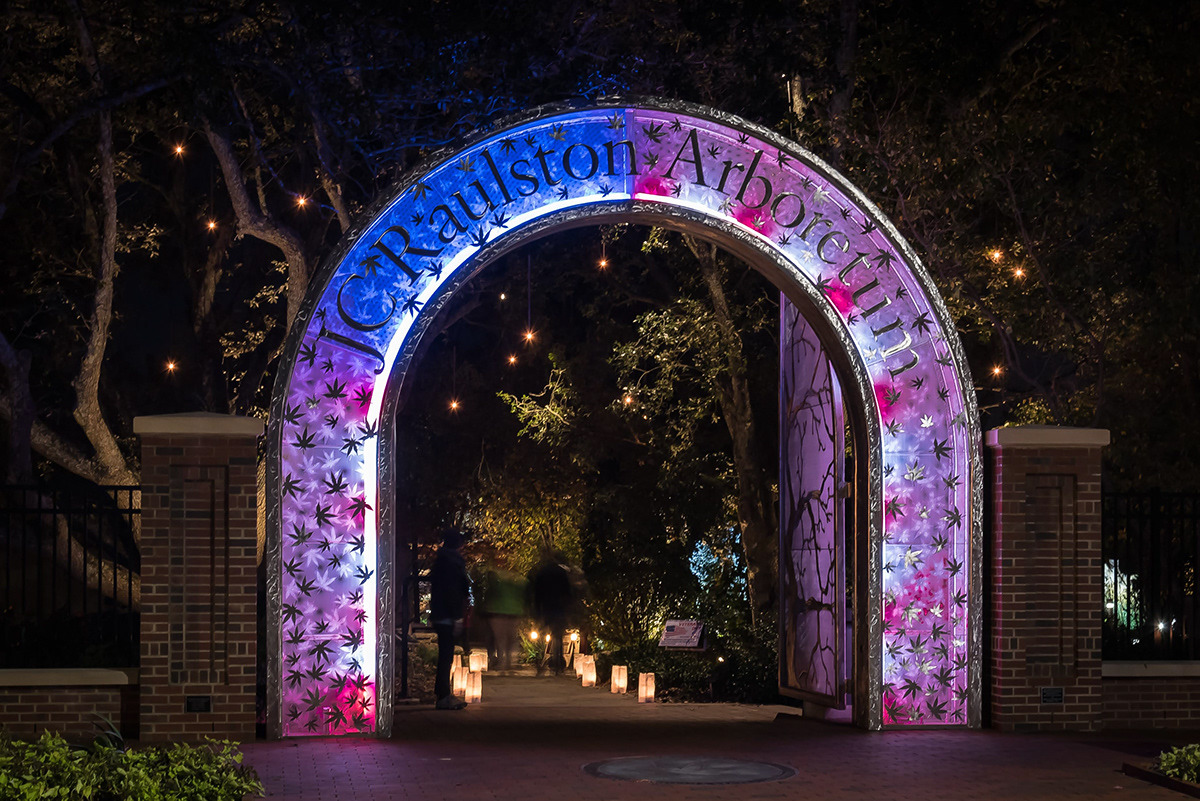
"Thank you for participating in this unique fundraiser that helps keep our gates open and free 365 days a year. Proceeds from the Moonlight in the Garden will benefit daily operations of the JC Raulston Arboretum."
–Mark Weathington, Director, JC Raulston Arboretum
